 By Pepper Parr By Pepper Parr
April 27th, 2020
BURLINGTON, ON
Ward 5 Councillor Paul Sharman weighs in on what happened to that development on Brant Street.
On August 31, 2017, the Planning and Building Department acknowledged that a complete application had been received for an Official Plan and Zoning By-law Amendment for 2100 Brant Street to facilitate the development of 233 townhouse units.
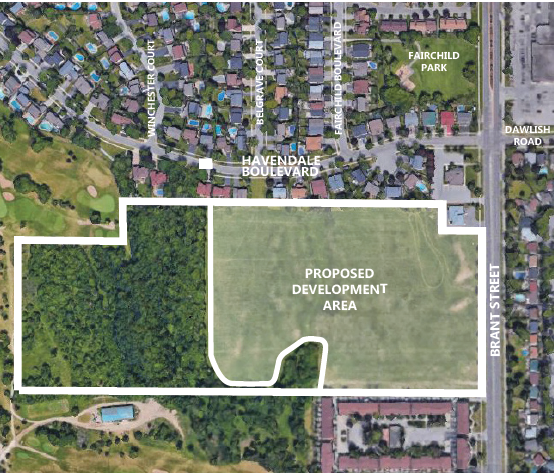 The ward Councillors; first Rick Craven and now Kelvin Galbraith were not opposed to the development. The original applications proposed the development of 233 townhouse dwelling units comprised of street townhouses located along Brant Street and a proposed public street and standard condominium townhouse units. The original net density of the development was 43.55 units per hectare and gross density was 21.07 units per hectare. The applications were requesting site specific exceptions to allow for the development.
Further to technical comments received from staff, other agencies and public feedback received through the processing of the applications, the applicant made changes to the proposed development and submitted revised studies, reports and a reconfigured draft plan of subdivision.
The applicants appealed the subject applications to the Local Planning Appeals Tribunal after the required time period established by the Planning Act expired. Notwithstanding the appeals, the City continued to work with the applicant in an effort to resolve what the City and its residents were concerned about. The result of these negotiations with the applicants, was Minutes of Settlement. This agreement was reached in November 2018 and supported a 212-unit townhouse development. This settlement agreement was based on the assessment from staff that the application satisfied all regulatory and planning requirements and was therefore defensible at LPAT.
 Paul Sharman listening to a delegation Despite the advice of staff, on December 17, 2018, the newly elected City Council, in a vote that was not unanimous, repudiated (i.e. cancelled) the settlement agreement. That decision not only pushed the City and the applicants towards an LPAT hearing but is also expected to lead to an awarding of costs to National Homes in an amount of approximately of $28,000 when the final settlements and awards are confirmed.
Notwithstanding the grim reality facing Council, City staff continued to work with the applicant in an effort to further refine the proposal to address concerns raised by members of Council and the neighbourhood surrounding the property.
At its meeting of April, 20, 2020 Burlington City Council approved the planning staff recommendation of Confidential Legal Report L-10-20 to accept a new offer of settlement between National Homes (Brant) Inc. (“National Homes”) and the City.
This settlement agreement presented to us was essentially based on the assessment from staff indicating that proposed amendments to the development proposal satisfied all regulatory and planning requirements and was therefore defensible at LPAT. The settlement proposed is almost identical to the rationale provided to the previous Council.
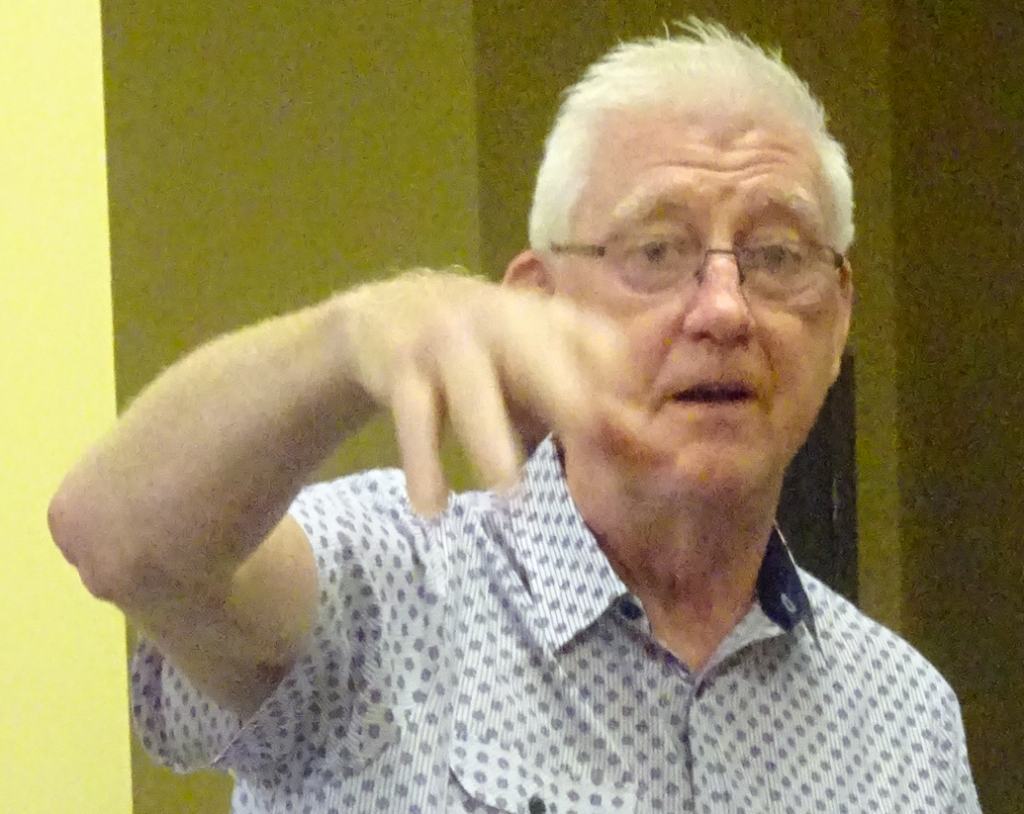 Paul Sharman fighting for his political life in the fall of 2018 Sharman says he is “the only returning member of Council in 2018 who voted to support of the original settlement agreement with National Homes. That decision was based on two considerations.
The first being that the applicant had worked with community members and staff to achieve several modifications. Original 2018 approved settlement included:
• reduction of 21 units
• addition of 0.76 parkland
• addition of 7 townhomes suitable for families and seniors
The second consideration being the assessment of staff that the application satisfied all regulatory and planning requirements and was therefore defensible at LPAT.
“On April 20th, 2020, I again voted in support of what was essentially the same application that I supported in 2018, for the same reasons although, as I have noted, there were some further, minor, modifications.
“Ironically, it is possible that increased setbacks included in the 2020 settlement will actually increase the net density of the development. In other words, the development will be more compact.
“It is unfortunate that taxpayers will likely foot a $28,000 legal fee that will be awarded against the City resulting from the new 2018 Council decision to scrap the first settlement agreement.”
Is that a shot over somebody’s bow?
Related articles:
John Calvert’s J’Accuse
The Mayor’s rationale

 By Pepper Parr By Pepper Parr
April 27th, 2020
BURLINGTON, ON

We asked the two women who are providing Gazette readers with an ongoing commentary on how things are going in their households with the schools being closed. The province’s decision to keep the schools closed until the end of May might create situations that will be difficult for many parents.
Ashley Worobec, the Chiropractor who runs long distances when she can find the time, said she “didn’t have much to say – It really doesn’t change anything for us- we were expecting the date to be delayed, which it has been, and we’re prepping ourselves mentally for the possibility that the next extension will end the school year entirely.
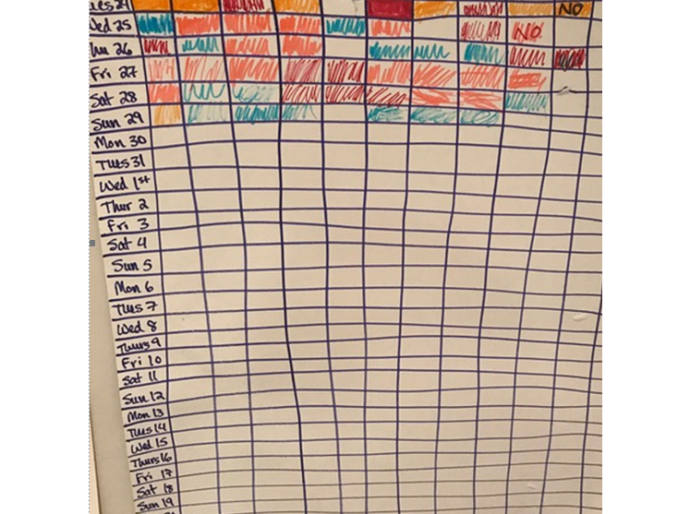 The Worobec family created a mammoth Task list to give the new approach to education some structure. “I do like how they’ve decided to watch and wait instead of just cancelling the school year entirely like some other provinces have, as that’s given us hope instead of looking ahead to months and months without school. At least this way, there’s still a glimmer of hope.”
Ashley’s two children seem to be coping quite well – the task list picture tells part of the story for their household.
Nicki St George said she “finds it frustrating to be stuck at home while the school closure date keeps getting pushed back further and further. It only serves to foster more uncertainty for myself and the kids. We are fortunate to have the time and technology available to facilitate learning from home but many people do not.
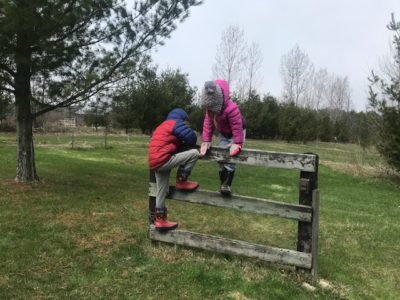 Getting them outdoors where they can burn off some of that energy. “Considering the preliminary data which suggests that school closures will have little impact on the spread of the virus, I think that the harms of keeping schools closed (specifically elementary schools) will likely outweigh the benefits.”
Mixed views.
One of the major issues during the months of short term school strikes was the number of On-line courses students were going to be required to take – with the strikes now settled teachers find themselves delivering every hour of instruction on-line.
Something ironic about how that turned out – teachers will get to learn that some courses can be done very well on-line and some parents might come to the realization that on-line instruction can be very effective in some situations.
The school boards take direction from the province. However, the school boards are the people that are going to have to deal with the disruption in the delivery of an education. They also have to look at the impact of the disruption on the quality of the education they deliver.
Moving from the end of elementary school and on into high school is a major right of passage for students. But what if high school starts with an hour in front of a computer monitor?
That’s an issue that senior school board staff find themselves thinking about.

 By Staff By Staff
April 27th, 2020
BURLINGTON, ON
While we are not yet out of the woods – not by any stretch of the imagination, all four Mayors in Halton Region, Burlington, Halton Hills, Milton and Oakville have formed the Halton Mayors Recovery Coordination Group
The four Mayors, Burlington Mayor Marianne Meed Ward, Halton Hills Mayor Rick Bonnette, Milton Mayor Gord Krantz and Oakville Mayor Rob Burton will coordinate and work together to prepare for a successful transition to a post COVID-19 emergency, reopening and recovery, and living with the changes it has brought.
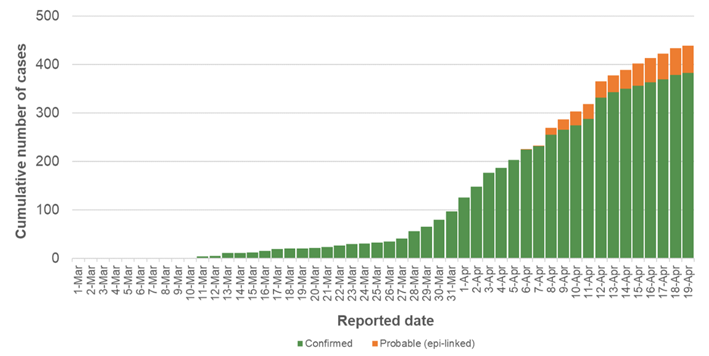 This curve has not flattened – the focus should be on getting the curve to change direction – creating a Group to Plan for a Recovery looks like a chance for a photo-op. While this does not mean that emergency measures put in place by the province, the region or individual cities and towns to slow the spread of COVID-19 are expected to be lifted in the near-term, it is prudent to begin to look ahead so that our plans can be ready to execute when the time comes.
The final phases of the pandemic response include the potential reopening of municipal facilities and the implementation of recovery efforts over the balance of the year. The dates of when recovery might begin are contingent on the continued slowing of the spread of the virus and the province lifting its emergency orders and restrictions, including those related to businesses and physical distancing.
“From the beginning of the COVID-19 crisis, we have stayed in contact as we collectively responded to the situation at hand, so it makes sense that we remain aligned as we plan for the post-COVID-19 recovery phase in our communities,” said Mayor Marianne Meed Ward.
 “All four Mayors have made the commitment to keep each other apprised of decisions being considered in each respective municipality, share best practices, and coordinate when it comes to the recovery planning. They will also ensure a continued close linkage with Halton Region, with the chair Gary Carr as an invited guest to our group when his schedule permits.” “All four Mayors have made the commitment to keep each other apprised of decisions being considered in each respective municipality, share best practices, and coordinate when it comes to the recovery planning. They will also ensure a continued close linkage with Halton Region, with the chair Gary Carr as an invited guest to our group when his schedule permits.”
__

 By Pepper Parr By Pepper Parr
April 27th, 2020
BURLINGTON, ON
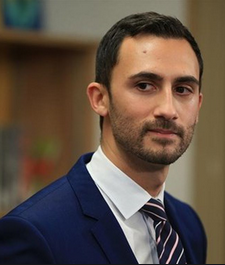 Education Minister Stephen Lecce Education Minister Stephen Lecce announced on the weekend that all publicly-funded schools will remain closed until at least May 31, 2020, as part of an effort to keep students, staff and families safe from COVID-19.
The extension was based on expert advice from the Chief Medical Officer of Health and health officials on the COVID-19 Command Table and is part of the government’s ongoing effort to stop the spread of the virus. The advice was to extend school closures for an additional period of time to permit updated modelling and data to inform next steps, given the government’s absolute commitment to safety.
“We will do whatever it takes to keep our students safe,” said Minister Lecce. “The government is taking a careful approach which provides our medical experts the time to review the modelling and make the best decision for the safety of our students and the future of learning.”
The government took immediate action to close schools in Ontario, the first in Canada to do so. The ministry continues to monitor the evolving situation and if necessary, the closure may be extended further to protect the health and safety of Ontario’s school communities.
At the same time the Ontario government is taking steps to ensure learning can continue. In March the province unveiled its Learn at Home portal. It offers all students high-quality resources, featuring made-in-Ontario math and literacy resources, created by Ontario-certified educators, in both English and French. Elementary resources are designed to help young students learn at home with interactive activities that encourage participation through entertaining and stimulating digital content. High school content was designed with a focus on STEM courses and ensures core competencies and skills are reinforced.
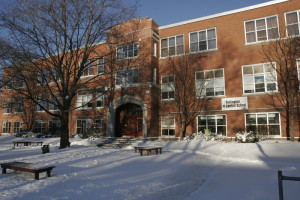 There won’t be a graduation ceremony and no prom either – but depend on the students to come up with something to celebrate leaving high school. “Regardless of what transpires over the coming weeks, Ontario’s students will be able to complete their school year with confidence,” added Minister Lecce. “In particular, for students in their final year, we are removing all impediments to ensure students graduate and pursue post-secondary education.”
In the event that they do reopen, school employees will have access as of May 29, 2020.
The Ministry of Education will move forward to replace the remainder of Professional Activity (PA) days and examination days with instructional time, as well as the introduction of an expanded summer learning program that will focus on credit recovery, supports for vulnerable students, and course upgrading. Boards are to find solutions at the local level in keeping with this direction while upholding collective agreement obligations.
The Minister of Education later said that the next time he makes a public announcement it will be to set out how the balance of the school year will be dealt with.
Later today Premier Doug Ford will unveil the framework for re-opening the province.

The Gazette has put together a team of parents who are at home taking care of their children while the province goes through school closures and the shut down of everything other than essential services.
Ashley Worobec and Nicki St. George will write regularly on how they are coping. We invite parents to take part in this initiative by adding comments to each Coping with COVID19 & the kids article.
 By Ashley Worobec By Ashley Worobec
April 27th, 2020
BURLINGTON, ON
Our mornings have still been a bit more structured and afternoons tend to be more whatever-we-feel-like.
One thing that I’ve found helpful for my Type-A personality, is writing out a list of the next day’s activities/tasks on the whiteboard on our fridge. Mornings almost always begin with a 5k run for myself and my dog, with my husband on the bike beside me, and more often than not, at least one of the kids comes on their bike too.
I haven’t been setting an alarm clock though, and in my “normal” life I’m often up at 4:45 or 5am, and out the door for my runs- these days I’m sleeping until I naturally wake up, which has been closer to 7:30 or 8am!
 Baking is a constant and consistent activity in the Worobec household. I have been thinking about getting up for a sunrise run here and there, as the sunrise is my favourite time of the day, and it would also give me some solitude. I’m an introvert by nature, so I re-charge with alone time, and that’s been much harder to come by lately. Perhaps a sunrise run will happen next week….
After my run, we move onto schoolwork. I’m the one who tends to supervise the kids during their schoolwork, as my husband uses this time to do his own online work with his students (he’s a high school teacher). Depending on the day, this has usually been taking my kids 1-2 hours to complete. My son is in Grade 5 and my daughter is in Grade 2, and they seem to be adapting to e-learning quite well.
Both of their teachers have been exceptional, and have been great at providing a variety of assignments and tasks for them, and I know my kids miss seeing them in person. Both kids have been using FaceTime regularly to “see” their friends, and that’s been a big help to them.
We’re into week 7 now of the clinic closure, and Saskatchewan has announced that chiropractors can return to work (with appropriate PPE in place) on May 4th, so my colleagues and I have been closely watching that situation. It is quite a helpless feeling to have the clinic closed, but my work team is having online meetings twice per week to stay in touch and keep our morale high.
I’m also keeping in touch with some of my patients via virtual or telephone consultations, and that’s been really helpful for me personally, as it’s given me a sense of purpose surrounding my work and a small feeling of being able to help my patients who are in pain. I am anxious to return to work, and hopeful with the trending numbers that Ontario is showing.
One initiative that I have just begun is hosting “Movement You”, which is a 10-minute workout, LIVE online on my Facebook and Instagram pages (search “Dr. Ashley Worobec”)- it’s a way for me to connect with my community and to encourage my patients to stay active and moving, which is something I believe passionately in.
Last Friday was the first time doing this, and it was a wild success, with my kids participating in the workout too. I plan on making this a weekly thing, every Friday at 11:45am, with movements that people can do easily in their living rooms.
A couple of other fun things we did this week:
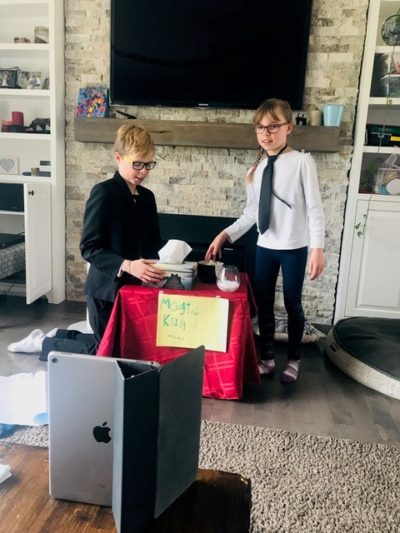 Virtual magic show for the relatives in Alberta 1. My kids put on a virtual magic show for our relatives in Alberta. I grew up in Alberta and my extended family is all still out West, so my kids are very used to using online platforms to talk to their grandparents and Aunts and Uncles. They looked up magic tricks on YouTube, practiced them, and then set up a little show. Their cousins and my parents loved it, and they were really proud of themselves.
2. We baked 5 dozen pumpkin chocolate chip muffins and then packaged them up and dropped them off on friend’s porches throughout the City, along with notes of support and encouragement.
3. We did a workout called “Heidi,” in honour of Constable Heidi Stevenson, who was tragically killed in the Nova Scotia shootings. I’m not sure who designed this workout, but this image has been circulating amongst the CrossFit community, and since my husband and I both go to a CrossFit gym, we jumped at this chance.
 A workout called “Heidi,” in honour of Constable Heidi Stevenson It’s common for CrossFit to have “named workouts” based upon First Responder’s killed in the line of duty, and since our gym has loaned us some gym equipment to use at home, we did this workout in our driveway on Saturday afternoon- it’s 23 air squats, 23 pushups, 23 kettlebell swings, 23 jumping lunges, 23 situps, and 23 box jumps, as many rounds as possible for 23 minutes. The number 23 honours the fact that she served with the RCMP for 23 years.
4. We watched the “Stronger Together” Covid-19 broadcast benefit on CTV on Sunday evening, and especially loved the montage of “Lean On Me” at the end.
~

 By Staff By Staff
April 25th, 2020
BURLINGTON, ON
Getting into spring and thinking about summer is going to be harder this year than it was last.
 No camping in provincial parks – Maybe in June? The province announced on Friday that the government is extending the closure of Ontario’s provincial parks and conservation reserves to May 31, 2020.
This includes car camping, backcountry camping, roofed accommodations, day use opportunities, access points and all public buildings.
Provincial parks and conservation reserves will continue to remain fully closed to all recreational activities.
Reservations for arrivals up to, and including, any further closure extension date will be automatically cancelled and reservation holders will receive a full refund with no penalty. We are also providing penalty-free refunds to reservation holders who wish to change or cancel their 2020 camping reservation, regardless of arrival date.
This is part of the drive to keep us apart and not have groups of more than five people congregating in one place.
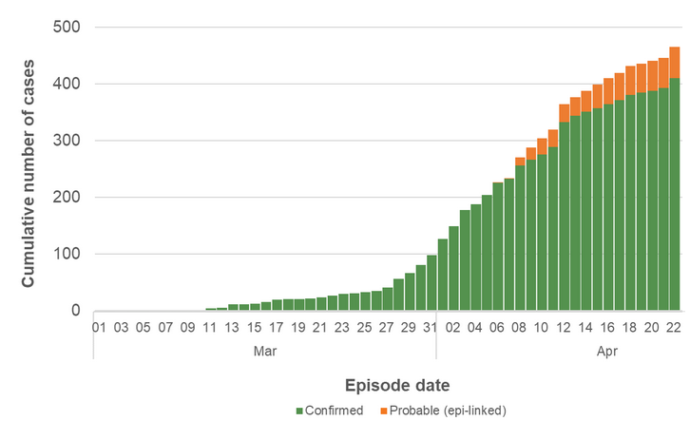 This is the infection curve for Halton – it hasn’t begun to flatten yet. That curve of COVID-19 infections is not flat enough – this kind of direction is going to be necessary until the number of infections stop increasing.
The virus that is now loose in the community is being passed from person to person – we know that. What we don’t know is who has it and who are they passing it to.

 By Pepper Parr By Pepper Parr
April 25th, 2020
BURLINGTON, ON
The Halton Region Public Health unit produces data on the status of the COVID-19 infection and the rate at which infections have grown and the number of people believed to have died as a result of the virus.
Cases over time
466 COVID-19 cases among Halton residents to date (410 confirmed + 56 probable)
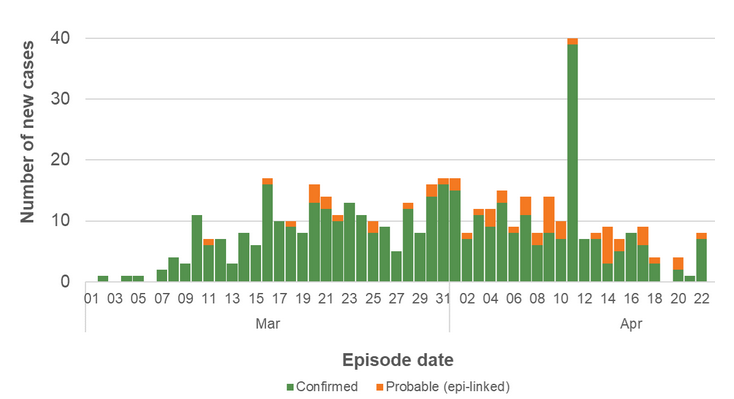 Figure 1: COVID-19 cases, by episode date, Halton Region, Mar. 1-Apr. 22, 2020 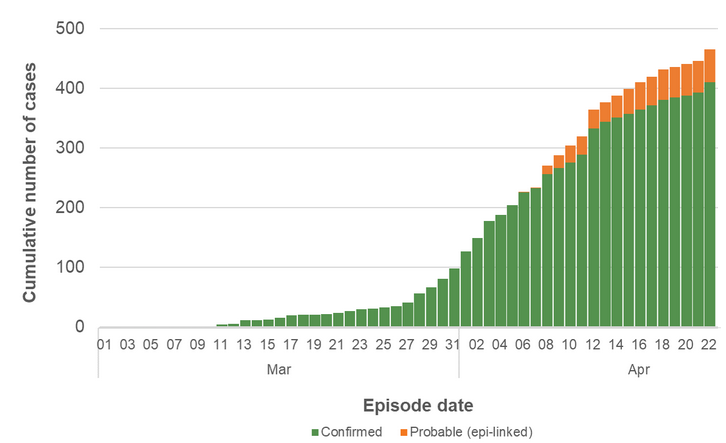 Cumulative COVID-19 cases, by episode date, Halton Region, Mar. 1-Apr. 22, 2020 Figures 1 and 2 show the 466 COVID-19 cases among Halton residents reported by end of the day on April 22. Unlike past reports, all cases have now been graphed according to their episode date, which is used to estimate the date that symptoms began. Figure 1 shows the number of new cases per day, while Figure 2 shows how cases have accumulated over time. Counts for the past 14 days should be interpreted with caution, since there is a delay between when a person becomes infected and when they develop symptoms, get tested, and are reported as a case. Please note the large increase on April 11 is due to expanded testing and identification of COVID-19 among asymptomatic individuals at Mountainview Residence.
Individuals who are lab-confirmed cases are shown in green. Individuals who are probable cases are shown in orange. Probable cases are epi-linked cases, which means they are presumed to have COVID-19 because they are symptomatic close contacts of cases or returning travelers who have COVID-19 symptoms.
Case demographics
70 cases were residents or patients of an institution experiencing an outbreak (15% of all cases)
64 cases work in health care (14% of all cases)
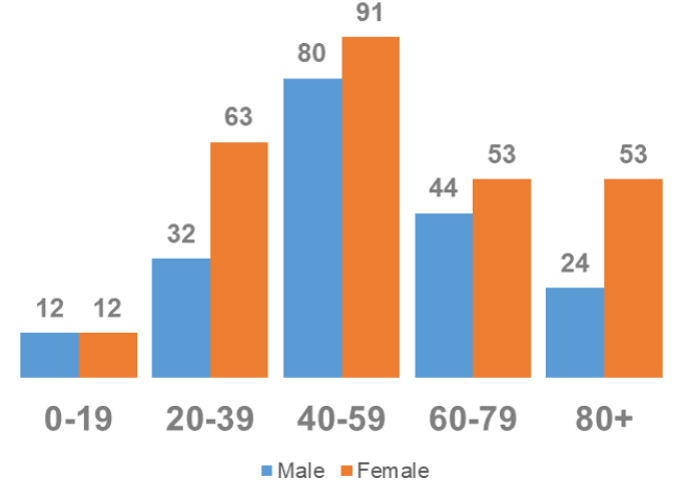 Figure 3: COVID-19 cases, by age and sex, Halton Region, 2020 Figure 3 shows that by end of the day on April 22, the most COVID-19 cases were among Halton residents aged 40-59 (with 171 cases, or 37%). 272 cases (59%) were female. Please note this figure excludes two cases with sex information pending.
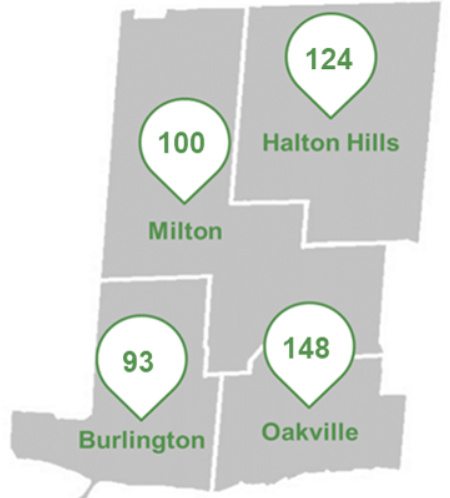 Figure 4: COVID-19 cases, by municipality of residence, Halton Region, 2020 Figure 4 shows that by end of the day on April 22, the greatest number of COVID-19 cases were among residents of Oakville (with 148 cases, or 32%). Please note this figure shows counts, and therefore does not take into account the different population sizes or age structures of the four municipalities. Counts in municipalities can also be inflated by outbreaks that have occurred within institutions in their boundaries. The figure excludes one case with municipality information pending.
Case exposure source
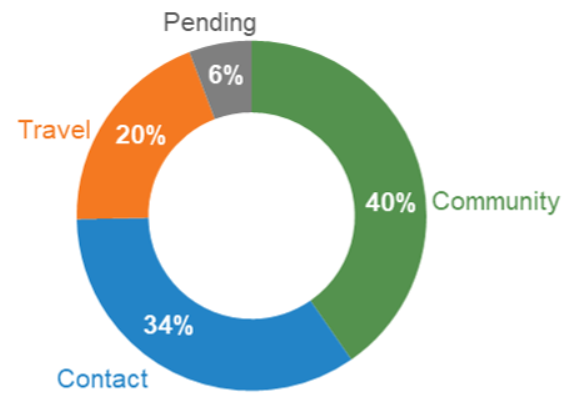 Figure 5: Percentage of COVID-19 cases, by exposure source, Halton Region, 2020 Figure 5 shows that by end of the day on April 22, 188 of Halton Region’s COVID-19 cases (40%) had no known travel or contact history, and therefore were believed to have acquired the virus within Ontario, making them community cases. 160 cases (34%) had contact with a confirmed case that was believed to be the source of their infection. 91 cases (20%) had a history of travel that was believed to have been the source of their infection. Information on exposure source was pending for the remaining 27 cases (6%).
Case outcomes
60 cases who have ever been hospitalized to date (29 listed as currently in hospital)
217 cases who have recovered to date
18 cases who have died to date (9 of the deceased were residents or patients of an institution experiencing an outbreak)
Institutional outbreaks
9 confirmed institutional outbreaks of COVID-19 are currently ongoing in Halton
12 confirmed institutional outbreaks of COVID-19 reported to Halton Region Public Health to date
Among the 12 confirmed institutional outbreaks reported to date, six (50%) have been in retirement homes, four (33%) have been in long-term care homes, and one each have been in a hospital and a group home. Nine of the outbreaks remain ongoing. Please note these counts do not include any suspected outbreaks that remain under investigation.
Lab testing
>6,000 Halton residents are known to have been tested for COVID-19 to date
Comparison to Ontario
12,879 total confirmed COVID-19 cases reported in Ontario to date
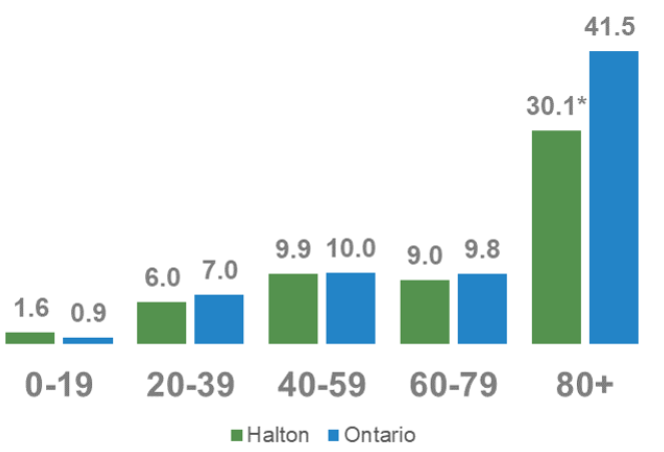 Figure 6: Age-specific rates of COVID-19 (per 10,000 population), Halton Region and Ontario, 2020 Figure 6 shows age-specific rates of COVID-19 for Halton and Ontario. Rates take into account the population size of each age group to make it possible to compare between different areas. Halton’s age-specific rates are currently similar to the provincial rates for all age groups except for residents aged 80+.
Halton has 30.1 cases per 10,000 residents aged 80+, which is statistically significantly lower than the 41.5 cases per 10,000 residents aged 80+ in Ontario overall. It is important to note that these rates will fluctuate as numbers increase throughout the pandemic, and that differences between age groups may reflect differences in the likelihood of developing symptoms and being tested.
Data limitations and data sources:
Halton case data: integrated Public Health Information System (iPHIS), extracted at 7:00 AM on April 23, 2020, to reflect data entered by the end of the day on April 22, 2020
Halton lab data: COVID Data Information System, extracted on April 20, 2020.
Ontario case data: Public Health Ontario, Epidemiologic Summary, COVID-19 in Ontario: January 15, 2020 to April 22, 2020, posted on April 23, 2020 to https://www.ontario.ca/page/2019-novel-coronavirus
Denominators for Halton and Ontario age-specific rates: Population projections [2020], IntelliHEALTH Ontario, extracted on April 8, 2020.
Data notes
All cases of diseases of public health significance diagnosed in Ontario are entered into iPHIS by local public health units. iPHIS is the Integrated Public Health Information System. It is a dynamic disease reporting system which allows ongoing updates to data previously entered. As a result, data extracted from iPHIS represent a snapshot at the time of extraction and may differ from previous or subsequent reports as data are updated.
The data only represent cases reported to public health and recorded in iPHIS. As a result, all counts will be subject to varying degrees of underreporting due to a variety of factors, such as disease awareness and medical care seeking behaviours, which may depend on severity of illness, clinical practice, changes in laboratory testing, and reporting behaviours.
Cases are included if their “diagnosing health unit” in iPHIS is Halton Region, which means counts include only individuals whose primary residence is in Halton Region. The case may not necessarily have been managed by Halton Region, if they were temporarily residing elsewhere during their case management period. Cases managed by Halton Region who normally live elsewhere but who were managed by Halton Region staff because they were temporarily residing in Halton during their case management period have not been included.
Cases for which the Disposition Status in iPHIS was reported as ENTERED IN ERROR, DOES NOT MEET DEFINITION, DUPLICATE-DO NOT USE, or any variation on these values have been excluded.
Figure 1 distinguishes between lab-confirmed and probable cases. Since April 7, probable cases are defined as epi-linked cases, meaning they are symptomatic close contacts of cases or returning travelers who have COVID-19 symptoms and therefore are presumed to have COVID-19. All other figures and numbers include both confirmed and probable cases combined.
Figures 1 and 2 use episode date, which is a field that is intended to approximate the symptom onset date for each case. It is calculated hierarchically, using symptom onset date if available; when it is not available, specimen collection date is used; if neither symptom onset nor specimen collection date are available, the lab test date is used; and finally, if none of these other dates are available, the date the case was reported to Public Health is used.
In subsequent reports, counts in Figures 1 and 2 may increase as cases are added from past dates as individuals become symptomatic, get tested, and their results are reported to Halton Region Public Health, as well as any past results are added due to delayed data entry or new arrival of lab results.
Cases are considered to be patients or residents of an institution experiencing an outbreak if they are linked to a confirmed Halton institutional outbreak in iPHIS, and they are not known to be a staff person at the institution.
Cases are considered to work in health care if they are known to have an occupation that involves caring for patients, e.g. physician, nurse, occupational therapist, recreational therapist, chiropractor, paramedic, midwife, orderly, etc. Individuals who work in health care settings but do not provide direct care to patients (e.g. managers, cleaning staff) have not been included.
Exposure type is determined by examining the exposure and risk factor fields from iPHIS to determine whether a case travelled, was a contact of a case or neither. A hierarchy has been applied as follows: Travel-related > Close contact of a confirmed case > Neither (indicating community acquisition) > Information pending.
Case outcomes (hospitalizations, recovery, deaths) reflect the latest available information reported to Halton Region Public Health and recorded in iPHIS by the extraction time.
Institutional outbreaks include outbreaks of COVID-19 in settings such as long-term care homes, retirement homes, hospitals, and prisons.
Lab testing data reflects only lab tests that have been reported to Halton Region Public Health and entered into CDIS. There may be more residents who have been tested but not reported to Public Health.
For daily Halton case tables and up-to-date information about how to protect yourself and others, please visit halton.ca/covid19
For daily provincial epidemiologic summaries and more information on COVID-19 in Ontario, please visit Ontario.ca/coronavirus
For national information on COVID-19 in Canada, please visit Canada.ca/coronavirus

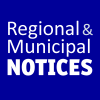 By Staff By Staff
April 24th, 2020
BURLINGTON, ON
Lakeshore Road from Nelson Avenue to Brant Street will be resurfaced (new top layer of asphalt).
Work will be completed during daytime hours.
From April 27 to May 29, lane reductions will be in place for the duration of this work. Priority will be provided to emergency services as required.
As part of this process, Brant Street from Pine Street to Lakeshore Road will be closed Tuesday, April 27, 2020, from 7 a.m. to 6 p.m.

 By Staff By Staff
April 23rd, 2020
BURLINGTON, ON
Austin Horton, a Grade 9 student from Georgetown District High School, is using his personal 3D printer to make dozens of personal protective equipment (PPE) to help medical professionals stay safe during the COVID-19 pandemic.
When Austin read about the need for PPE on social media in early April, he didn’t hesitate to fire up his 3D printer at home to start making plastic face shields.
 Grade 9 student Austin Horton saw a need for Face Shields – went into production and has delivered 80 so far. “I found the design online and slightly adjusted it for my printer,” he said. “It feels good to be doing this. I’ll keep doing this for as long as we have materials and it’s necessary.”
He has printed 80 shields so far. Each one takes about an hour and he prints around a half dozen a day. Austin leaves the PPE in a sealed bag at the front of his home and it is picked up by St. John Ambulance twice a week. He says the shields are being distributed to non-hospital medical professionals.
Michael Gallant, Principal at Georgetown District High School, said Austin’s PPE effort brings important hope to the local community.
“Like the residents of Georgetown, GDHS students and staff look for ways to support and improve their community and are committed to the success of all,” he said. “It is this dedication to the welfare of others that makes Georgetown such a special place. Find a way to do something that helps others and you will spread the hope and positivity that will get us through this challenge.”
Austin’s parents Krista and Shaun are very proud of their son’s effort to help people during these challenging times.
“Austin has always been very generous with his 3D printer,” Shaun said, noting he has made items to sell to fundraise for charities. “When it comes to helping others, he is always willing to assist wherever he can.”
“As soon as he was advised of the call for help, Austin offered to help immediately,” Krista said. “We thank (frontline workers) for taking time away from their family and friends to care for those who are not well and unable to have their families with them.”
Tim Bauer, Executive Director of St. John Ambulance, Halton-Hamilton Region, is grateful for Austin’s effort to help.
“The incredible work (Austin) is doing will go a long way toward ensuring public safety in this time of crisis,” Bauer said. “St. John Ambulance sincerely thanks him for understanding the need for PPE and for choosing to make an impact in the Halton community during a time of such great need in the battle against COVID-19.”

 By Staff By Staff
April 23rd, 2020
BURLINGTON, ON
The Halton Regional Police Service’s Child Abuse and Sexual Assault Unit (CASA) and Halton Children’s Aid Society (Halton CAS) are urging residents to remain vigilant in reporting suspected child abuse.
The majority of suspected child abuse reports normally come from third-party sources, increased levels of isolation in the past weeks have resulted in a marked decrease in the number of reports of suspected child abuse/neglect.
 Children trust – learning not to trust takes their childhood away from them. “We normally receive concerns from schools, friends, other parents, coaches and daycare providers,” says Halton Regional Police Service Detective Sergeant Crystal Kelly. “With social distancing measures in place and increased stress on families, there is little opportunity for children to interact with or reach out to those they trust.”
The Halton Regional Police Service (HRPS) has responded to eight (8) calls in April, 2020 regarding suspected child abuse, compared to 30 calls during the same time period in April, 2019, a 73 per cent decrease year over year.
Similarly, the Halton CAS has observed as 27 percent decrease in calls in April 2020 compared to 2019. Since the beginning of April, 2020, only 85 new cases have been opened by Halton CAS, compared to 169 during the same period in April, 2019, a 50 per cent decrease year over year.
“At Halton Children’s Aid Society, we are concerned about the increased risk of child abuse and neglect due to families being isolated from the community,” says Jennifer Binnington, Director of Protection Services at the Halton Children’s Aid Society.
“We understand this is a very stressful time for many families and we want you to know that we are an essential service and are open to assist and support children, youth and families 24 hours a day, 7 days a week. Please call us if you have any concerns or worries about a child during this time.”
 The HRPS and Halton CAS are asking that everyone remains mindful of the welfare of their neighbours, their children’s friends and classmates, and their relatives. It is crucial that residents also speak to their children about what to do if a friend confides in them that they are not safe at home. The HRPS and Halton CAS are asking that everyone remains mindful of the welfare of their neighbours, their children’s friends and classmates, and their relatives. It is crucial that residents also speak to their children about what to do if a friend confides in them that they are not safe at home.
Victims or friends/family of victims are encouraged to contact the Halton Regional Police Service, Halton Children’s Aid Society or other community resources if child abuse or neglect is happening.
Help is available.
The following is a list of valuable support services and resources in Halton Region for victims of child abuse:
• Halton Regional Police Service Child Abuse and Sexual Assault Unit 905-825-4777
• Halton Children’s Aid Society 905-333-4441 or 1-866-607-5437
• Kid’s Help Phone 1-800-668-6868 (24-hour crisis line)
• Radius Child & Youth Services 905-825-3242 (Oakville) or 1-855-744-9001
• Halton Women’s Place 905-878-8555 (north) or 905-332-7892 (24-hour crisis line)

 By Pepper Parr By Pepper Parr
April 22nd, 2020
BURLINGTON, ON
In a Statement published in the Mayor’s Newsletter – A Better Burlington – Mayor Meed Ward wrote:
City Council, at a Closed session accepted a proposed revised plan for a townhouse and semi-detached development at 2100 Brant Street. The proposal will be decided by the Local Planning Appeal Tribunal (LPAT) at a hearing scheduled in July.
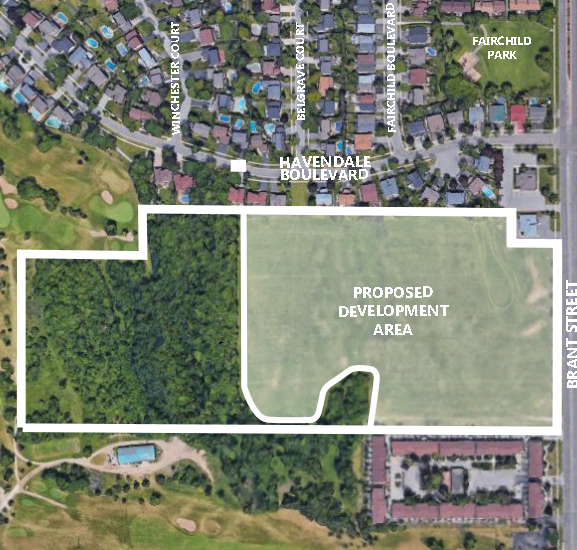 It is a piece of land that was farmed for centuries. It was pristine – and good have been a model community. The plans do not include anything near the traditional back yard. The original proposal was for 12 townhouse blocks with a total of 83 units and three condominium townhouse blocks with 150 units, for a total development of 233 units. There was no parkland. Also included in the applications are a woodlot block as well as a natural heritage system block. The proposed development site has a total area of 11.1 hectares (27.2 acres). The developable area is 5.04 hectares.
The land is currently vacant and has been historically used for agricultural purposes.
The former City Council had approved a revised proposal in November 2018, before the new council was sworn in but after the election when 5 of 7 members of the previous council were not returning due to defeat or retirement.
Current City Council rescinded that plan in December 2018 in an effort to give residents, staff and the applicant additional time to improve the plan and come to a consensus on a revised development.
A group of citizens, primarily representing residents in the neighbourhood north of the development, formed Vision 2100 Brant Neighbours Association, an incorporated group that received Party status at the LPAT hearing to present evidence on behalf of residents.
Representatives of the townhouse condominium board immediately to the south of the project had earlier issued a letter of support for the November revised proposal, considering their issues (primarily around setbacks and drainage) to be settled.
City Council and Vision 2100 received a revised proposal in March 2020. This proposal was provided directly to the Vision 2100 citizen’s group at a meeting March 10 with the applicant and Ward Councillor. The proposal was further discussed April 2 via teleconference with Vision 2100 representatives and the Ward Councillor and Mayor, to seek citizen input on the proposal.
To date, Vision 2100 has not provided any suggested changes or feedback on the proposal, but did raise additional questions around parking, snow storage, traffic, and storm water management. These were answered by the applicant by email to the residents (see background below), and addressed in the revised proposal to the city’s satisfaction.
The new proposal improves on the original application as well as the November 2018 proposal with the following changes:
Reducing the unit count from 212 to 210 (down from 233 in the original proposal)
In the Northwest area of the development on both sides of the Almonte Drive extension, replacing six 2-storey townhouse units with 4 semi-detached 1.5 storey bungalofts
Increasing setbacks from the homes to the north, from 9 metres to 10 metres; in some areas the setback is 11 metres
Increasing the senior-friendly units with ground floor bedrooms to aid accessibility, from 7 to 16 units
Provision of a 0.3 hectare (0.76 acre) centrally located Public Park.
City council voted to accept the revised proposal at the council meeting of April 20, 2020.
The details of that March plan, and the planning justification for supporting it provided by city staff, are included in the planning staff analysis here: 2100 Brant Planning Analysis
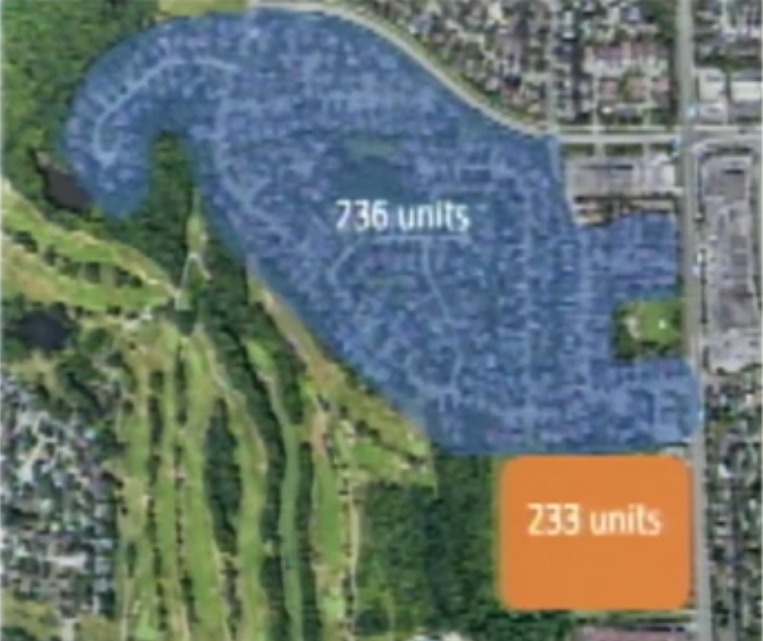 The orange is where the proposed 233 units were to go – that has been reduced to 210 Unlike the vast majority of municipalities, Burlington releases the planning analysis for matters which the municipality is supporting approval of by the LPAT, in advance of the hearing. This policy change was implemented by the new City Council to ensure maximum transparency with residents about the basis of our decision-making.
The final decision on the revised proposal will be made by the LPAT. The city and applicant will appear in support of the proposal.
Vision 2100 is a registered Party to the hearing which gives them the right at the hearing to call evidence (witnesses, studies or both) to refute or support the proposal, cross examine city or applicant witnesses, or suggest further modifications to the proposal. The City of Burlington, the applicant (National Homes) and the Region of Halton are the other registered Parties to the hearing. There are two registered Participants to the hearing who can provide feedback at the hearing as well.
Details on the original application submitted in 2017, revisions to the proposal, and details of the LPAT hearing are available on the project page for the development here created when the application was received: Current Development Applications, Ward 1, 2100 Brant St
Below is additional background, answers to some questions and a statement from the Mayor and Ward councillor.
Statement from Mayor Marianne Meed Ward and Ward 1 Councillor Kelvin Galbraith on 2100 Brant:
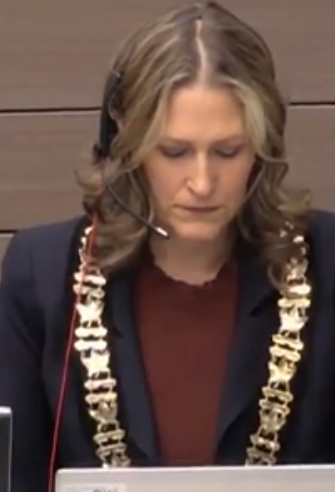 Mayor Marianne Meed Ward Resident input over several years, including the work of Vision 2100, has improved this application for the better, and we thank them for that.
Though the most recent proposal may not be exactly what residents or Councillors were hoping for, it does include more green space than the original proposal, including a new park, fewer units, less height and density, more variety and senior-friendly options, increased setbacks and better transition to the neighbourhoods to the north and south. The recent questions raised by residents around parking, traffic, snow storage and storm water management have been addressed.
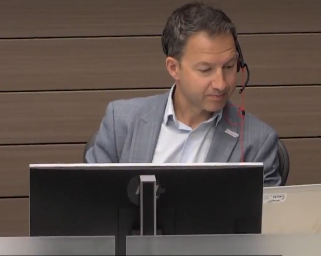 Ward 1 Councillor Kelvin Galbraith – working part time as a DJ? In accepting the revised proposal, council considered a number of factors, including public input, the improvements made that addressed some of the concerns raised, the planning justification provided by staff, and advice from legal counsel.
Our decision also factored in some practical realities, including the inability to secure a planning witness that was of the opinion that the November 2018 proposal did not overall represent good planning, the likelihood that a hearing would not produce a different result, and the possibility that city taxpayers could be required to pay the entire costs of the applicant at a lengthy hearing. In addition, city staff who supported the November proposal would likely have been required to testify on behalf of the applicant, at city taxpayers expense.
We also considered that notwithstanding council accepting a revised proposal, there remain options for continued public input, especially for Vision 2100, which can provide feedback or modifications on the revised proposal, and/or proceed as a party to the hearing and call evidence and witnesses.
We believe we achieved the best outcome possible for residents in this case, and your input directly made that happen.
Background and Answers to Questions:
How has public input been gathered on this application?
This application has been under review since 2017, with multiple points of public input along the way. A citizen’s group, Vision 2100, was formed to represent the concerns of residents primarily north of the development site. A citizen’s group was formed to the south to represent the interests of the townhouse development to the south. They submitted a letter of support for the November 2018 revised proposal.
The applicant met with the public over 12 times in that period, in either organized public meetings or smaller resident meetings.
There was a neighbourhood meeting Oct. 12, 2017, a statutory public meeting April 3, 2018 where residents presented detailed feedback and suggested modifications to council. Some council members at the time remarked that they were the best and most comprehensive presentations they had heard. There was a further open house to discuss revised plans July 17, 2018.
Throughout 2019 there have been numerous additional consultations with the applicant, city staff and Vision 2100, individually or as a group, to address the remaining concerns of the community. They included general over development of the site with related issues, and the interface of the development to the single family neighbourhood to the north, at Almonte Drive/Belgrave Court/Havendale Blvd.
In February 2020 the applicant advised it was prepared to make changes to the plan to address the resident concerns. In March they submitted a revised proposal to Vision 2100, and city staff. City Council received the proposal in early April.
How is public input reflected in the final proposal?
Since the original application, there have been at least 11 major revisions as a result of public, staff and council input, including a reduction in units, increased parkland, increased setbacks from the neighbourhoods to the north and south, reduced height of some units and conversion from townhouses to semi-detached, and provision of accessible, senior friendly semi-detached bungalofts. There have been three different proposals including the most recent one.
The proposal was provided directly to the Vision 2100 citizen’s group at a meeting March 10 with the applicant and Ward Councillor. The proposal was further discussed April 2 via teleconference with Vision 2100 representatives and the Ward Councillor and Mayor, to seek citizen input on the proposal.
To date, they have not provided feedback on the most recent proposal, but they did raise several outstanding questions via email related to traffic, parking, snow storage and storm water management. These questions were raised with the applicant by the Mayor and Ward Councillor on residents behalf, with the response as follows:
Traffic on Havendale, Fairchild and Brant St. Was a traffic study produced and taken into account? ANSWER: A traffic study was provided to Vision 2100 previously with the analysis describing the difference of a single family development and a townhouse development completed by a professional traffic engineer, outlining that a single family home development would generate more traffic. City staff reviewed and supported the findings of the study.
Parking, no street parking on private roads and limited visitors parking. Where do visitors park? ANSWER: Visitor parking is provided in the development on both public roads interior to the site and private roads as detailed in the attached site plan (also provided to Vision 2100).
The Zoning By-law requires 54 visitor parking spaces, whereas 59 are proposed. In addition 25 on-street parking spaces could be accommodated along the Almonte Drive extension.
Snow removal. There is no room to pile snow. Does the City have a plan to resolve that problem? ANSWER: The site plan attached to the revised proposal identifies areas where snow storage will be designated, in the bottom left and top right areas of the development.
Storm Water management. This has been a serious issue for the residents, based on actual flooding experiences where the empty lot at 2100 Brant served as a sink which helped to mitigate the flooding. Now there will be no sink because the area will be developed. The proposal is for an underground collection system with tanks which can be drained into the existing stormwater sewer at Brant Street. The question is, will there be enough capacity to accommodate two major rain storms in a row and will the system work properly? ANSWER: The design was prepared by a professional engineer based on their experience and history of developing many projects within the GTA with a similar design. Burlington City engineering staff had their professional engineers along with the Region of Halton’s professional engineers review the design of the system and both have been satisfied.
Why was this appealed to the Local Planning Appeal Tribunal?
Developers and residents have equal legal right in Ontario to appeal any decision of city council on a development matter to the LPAT, to seek a different decision.
Further, an applicant can appeal to the LPAT if the municipality exceeds the provincially mandated timelines to make a decision, which at the time of this application were 180 days.
The applicant, residents and staff agreed to continue to work together on the project beyond the 180 day time frame to try to come to a better outcome, thus setting aside the deadline. This application is now in its third year of review.
However, this changed when the previous provincial government announced it was making changes to the LPAT (then called the Ontario Municipal Board) to restrict what could be appealed and giving more priority to local council decisions. The current provincial government rolled back those changes so the LPAT functions essentially the same as the OMB did.
However in that transition period thousands of applications across the province, were preemptively made to preserve rights to a hearing under the old OMB rules, including this one which appealed using the tool of “non decision” within the deadline, because council had not made a decision within the 180 day time frame.
What happens now?
This application and the proposed revised plan will be heard by the Local Planning Appeal Tribunal (LPAT) at a 12-day hearing scheduled to begin July 27. At that hearing, the applicant and city staff, based on City Council’s instructions, will jointly be requesting that the LPAT approve the revised application.
Due to COVID19, the province has cancelled all hearings till the end of June, but that does not apply to 2100 Brant Street as it is beyond that window of time. As such, all parties to the hearing, including Vision 2100, are required to produce evidence and experts to refute the application and revised proposal if they wish to challenge it.
To date, neither the city, nor Vision 2100, were able to find a planner to refute the proposal. This would leave the city without a witness at the hearing, compromising any ability to reach a different outcome at a hearing than the proposed application. In addition, city staff would most likely be called by the applicant to support the proposal, as they initially recommended approval of the November 2018 proposal. This factored into council’s decision to accept the third revised proposal as the best outcome possible, and an improvement on both the original and November proposals.
Entering a hearing without a witness could have also led to an award of costs against the city for the applicant’s expenses of the entire 12-day hearing, saddling taxpayers with a significant bill with no improvement in the outcome of the development. This also factored into council’s decision.
What are the opportunities for further public input on this application?
The next steps and opportunities for further public input at the hearing are detailed below, and were outlined via email to Vision 2100 from the Mayor and Ward Councillor April 10.
Vision 2100 has party status at the hearing. They can present evidence at the hearing regardless of whether any other party enters into a settlement. As such, they retain the opportunity (and obligation as a party) to call evidence against the revised proposal if they are opposed.
An issues list identified for the hearing outlines the issues raised by the various parties. The list is available on the project page on the city’s website. Issues list, attachment 3
There are four parties to the hearing: National Homes, City of Burlington, Vision 2100 and Region of Halton. On the issues list there are 16 issues cited by the city and Vision 2100 (Items 1-12, 14-17); 4 issues cited solely by Region of Halton (Items 13, 18, 19, 21), one issue cited by Region of Halton and Vision 2100 (Item 20), and 2 issues cited only by Vision 2100 (Items 22, 23).
We understand that Vision 2100 has wanted to see the city’s response to various issues and concerns to use in their own efforts at a hearing. Given that city staff previously approved the initial, and the modified (Nov 2018) application, and recommended approval of the March 2020 proposal, any concerns can assume to have been resolved to the city’s satisfaction.
The bulk of the issues raised by the city relate to planning justification matters. These were resolved to the city’s satisfaction, as outlined in the planning justification analysis
Any party can withdraw its issues or settle. Where issues are jointly raised, if one party withdraws from an issue, the remaining party to that issue can still raise it as an issue at a hearing.
Thus, regardless of the actions of the other parties, Vision 2100 retains the option in a hearing to call its own evidence on any of the issues they are listed under, as noted above.
According to the LPAT procedural order, where there are multiple parties listed beside a single issue, those parties have the option to call one single witness together to deal with that issue. This has led to some confusion that the city would call evidence and pay for it on behalf of Vision 2100. That is not the case, as each party remains separate. The City has been clear with Vision 2100 throughout the appeal process that each party, although having the same issues, was separate and should prepare to call its case separately in the event that one of the parties reached a settlement of the appeal.
If the city chose to call evidence on a particular issue, Vision 2100 could rely on that evidence themselves, rather than hire a second individual. If the city did not choose to call evidence, Vision 2100 would then be required to do so themselves. Each party retains independence, with the option to collaborate.
If one of the parties withdraws an item as an issue, or deems it settled and taken care of, the responsibility would be with the remaining party to call its own witness at the hearing, if that party believed that issue has not been resolved, based on their own expert review.
The format of the hearing is that each party must call its own witnesses to support their position of whether or not the application as presented should be approved; each party has the ability to cross-examine the witnesses provided by any other party. The documents in support of the application have been publicly available online since 2017, and residents can review this in advance of a hearing to plan their response. The planning analysis from the city is now also available to residents to plan their response.
A party to the hearing can produce their own evidence to refute the application, and would have opportunity at a hearing to ask questions of others. Regardless of whether there is a settlement, Vision 2100 has this opportunity to ask questions at a hearing, but also an obligation to produce its own evidence for any issues that Vision 2100 has identified on the Issues List.
Summary of options for continued public input:
1. Vision 2100 can undertake to hire their own experts to respond to the material that has been provided by the applicant and is publicly available online. This review may satisfy the concerns raised, or lead to suggested modifications which could in turn be requested of the applicant. Understandably, this is a significant financial undertaking, and may not be feasible.
2. As a resident’s group and as a party to the hearing, Vision 2100 has a unique opportunity to provide a direct public voice on the revised proposal, which they have not done yet. Vision 2100 has an opportunity to review the revised proposal, determine if it satisfies the concerns raised and if not suggest modifications.
3. If the proposed modifications are not accepted, Vision 2100 also has the option to proceed to a hearing, with the obligation to hire experts to refute the applicant’s material (which is publicly available online) and present new evidence in support of any additional proposed changes.
Did the city follow proper planning process on this application?
In dealing with this application, the city has followed the provincial planning process, which is not unique to Burlington but is required across Ontario. The process allows any party independently to determine whether or not its issues have been resolved.
The process allows any party to determine that its issues have not been resolved and proceed to a hearing, but in that case would need to present its own evidence to refute the application.
What is City Council’s role?
City council has an obligation to review and consider any revised proposal. In reviewing the proposal, we consider input from our planning and legal team, the applicant, as well as resident’s groups or individuals. The public is represented in this process in a variety of ways, including through your elected representatives and our voices carrying your input/questions forward, as well as any direct input you have provided to the city, applicant and elected representatives.
Your elected representatives also undertake to ensure that outstanding questions/issues have been addressed in making any decisions.
All means of public input described above have occurred throughout the processing of this application.
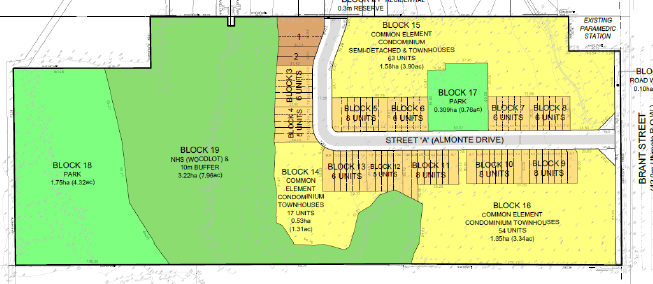 Think traffic flow onto Brant – and pity those that want to make a left hand turn on Brant in the morning rush hour.

 By Staff By Staff
April 22nd, 2020
BURLINGTON, ON
Somewhere in Germany – food is put in a plastic bag and left for people who need it.
Simple, almost elegant.
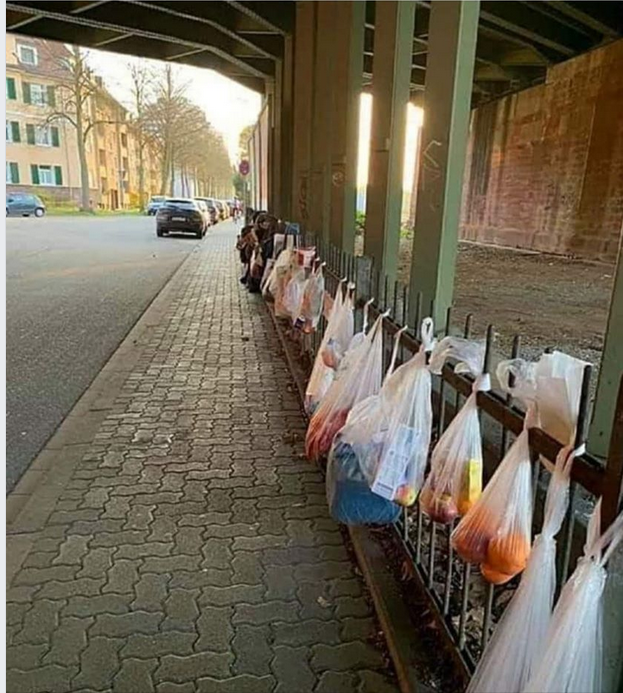 If you tried that in Burlington – it would probably be a bylaw infraction or Legal would find a way to say – that it can’t be done. If you tried that in Burlington – it would probably be a bylaw infraction or Legal would find a way to say – that it can’t be done.
Nice idea though – eh! Makes you feel good

 By Staff By Staff
April 22nd, 2020
BURLINGTON, ON
Proposed Development
A proposal has been submitted for the development of 12 townhouse blocks with a total of 83 units and three condominium townhouse blocks with 150 units. Also included in the application are a woodlot block as well as a natural heritage system (buffer) block. The proposed development has a total area of 11.1 hectares (27.2 acres). These lands are currently vacant and have been historically used for agricultural purposes.
LPAT Appeal Update – April 22, 2020
Is this progress?
At its meeting of April, 20, 2020 Burlington City Council approved the recommendation of Confidential Legal Report L-10-20 to accept an offer to settle the issues in dispute between National Homes (Brant) Inc. (“National Homes”) and the City with respect to National Homes’ appeal currently before the Local Planning Appeal Tribunal (“LPAT”).
As part of this approval, Council approved the recommendation that the planning analysis attached as Appendix ‘B’ to L-10-20 be released publicly and posted on the City’s webpage under Planning and Development Applications for Ward 1, while retaining solicitor/client privilege over the balance of this matter in its entirety.
The settlement between the City and National Homes resolves the issues in dispute between the City and National Homes on the basis that National and the City will seek LPAT approval of a revised development proposal for the subject lands.
The revised development proposes 210 dwelling units in townhouse, street townhouse, and semi-detached dwelling forms abutting public and private roadways, surrounding a 0.31 hectare centrally located Park block.
In particular, the revised development plan makes changes to where the proposed development inferfaces with the existing residential neighbourhood to the north, reducing the unit count in the area and replacing proposed 2-storey townhouses with 1.5-storey semi-detached bungaloft units. The revised development plan also increases the minimum building setback for the proposed semi-detached units backing on to existing lots on Havendale Boulevard from 9 metres to a minimum of 10 metres.
A copy of the planning analysis is available on the development application webpage, along with a copy of the conceptual site plan and proposed plan of subdivision for the revised development.
How does this impact the hearing scheduled to commence on July 27, 2020?
While the City and National Homes have settled the City’s issues in the appeal, there are two other parties to the hearing- the Region of Halton and neighbourhood association Vision 2100 Brant. As a result, the appeal hearing will proceed on July 27, 2020 with the City and National Homes attending to seek LPAT’s approval of the revised development plan and to respond to the evidence called by one or both of the other parties in opposition to the revised development.
Should the remaining parties both individually reach a settlement with National Homes in the appeal, the parties could seek to have a settlement hearing scheduled in advance of July 27, 2020 in order to present the settled plan to LPAT for approval. If that were to occur, the hearing scheduled to commence on July 27, 2020 would not be held.
The City’s development application webpage for 2100 Brant Street will be further updated to advise of any additional settlements between the other parties and National Homes or the rescheduling of LPAT hearing dates.
If the LPAT hearing proceeds, the good people in the Havendale community are going to find themselves city at a table with the city on the other side opposing what they want.
The Vision 2100 document and the delegations that were part of the protest against the development was one of the very best the Gazette has seen in the past ten years. A new city council was elected to oppose this kind of over-intensification.
It would be nice to know just how each Councillor voted on this matter in that Closed Session of Council.

 By Pepper Parr By Pepper Parr
April 22nd, 2020
BURLINGTON, ON
Anita Cassidy, Executive Director of the Burlington Economic Development Corporation gave city council and very thorough briefing on just what the commercial sector was up against.
The focus was on the hospitality and tourism sectors.
It was not a pretty picture.
 Anita Cassidy, Executive Director of the Economic Development Corporation. Cassidy reviewed just how that wave that has engulfed us got here. It all started in China last November. We have all heard the rate at which this spread and the impact it has had – what’s important at this point is to realize that this pandemic is going to change the way we do business – quite what that shape the change takes is something we will be determining.
November 2019 – First Case Wuhan China
March 14, 2020 – Burlington Parks & Rec Facilities and Agencies closed to public.
March 16 – All City Facilities closed to public,
March 17 – Ontario declared emergency and closed
• All bars and restaurants to take out only
• Schools and Childcare
• Recreation facilities, libraries and theatres
March 21 – Federal Government Closed Border to non-essential travel
March 21 – Mayor Meed Ward Declared an Emergency in City of Burlington
March 24 – Province mandated closure all non- essential businesses for 14 days.
March 30 – Province extended mandated closure all non-essential businesses until April 13.
April 3 – Province reduced list of essential businesses.
Less than three weeks and the world as we knew it had been turned upside down.
The Premier moved into overdrive and has been transparent in making information available.
Cassidy, relying heavily on Toronto Board of Trade, set out what we know and what some people expect.
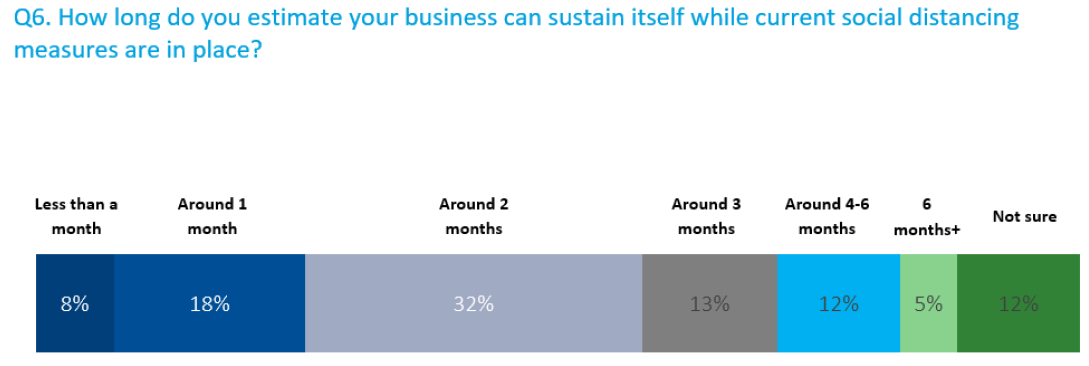 Well over half don’t think they can last more than three months.
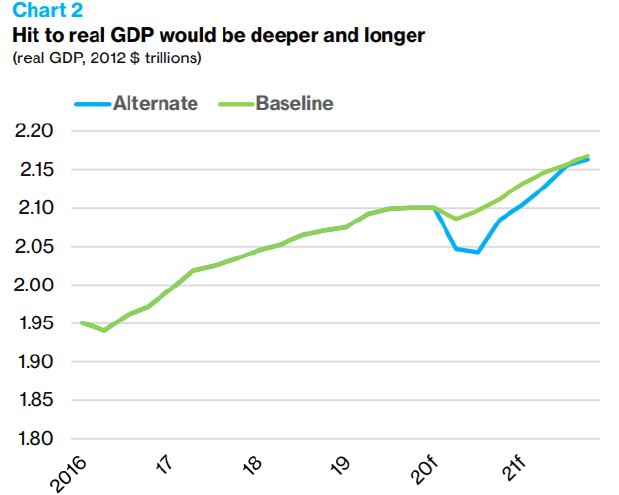
Speaking for what is being called Team Burlington – representing the Chamber of Commerce, the Burlington Downtown Business Association, the Restaurant and Hospitality group and the Economic Development Corporation Cassidy pointed to the Team Burlington COVID-19 Virtual Business Support Forum Series, a video conference series to provide businesses of all sizes with an opportunity to ask questions and hear from subject matter experts, as well as key leaders and decision-makers from all levels of government.
Business Strategy & Planning with DeGroote School of Business – April 28.
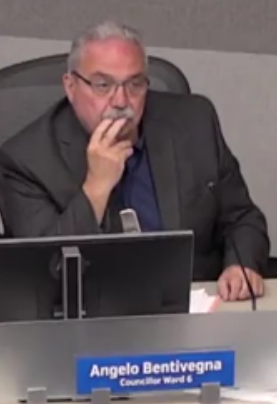 Ward 6 Councillor Angelo Bentivegna Angelo Bentivega, a small business operator and the Councillor for ward 6 asked Cassidy how council could help. “I realize,” he said “that for many of the small business owners that this is not only their business that is at risk – their major investment is also at risk.”
Everyone realizes that some operations that locked their doors three weeks ago may never get to open those doors again.
Moral support is about all the city can offer – the province and the federal government have programs – they all seem to ave strings attached to them.
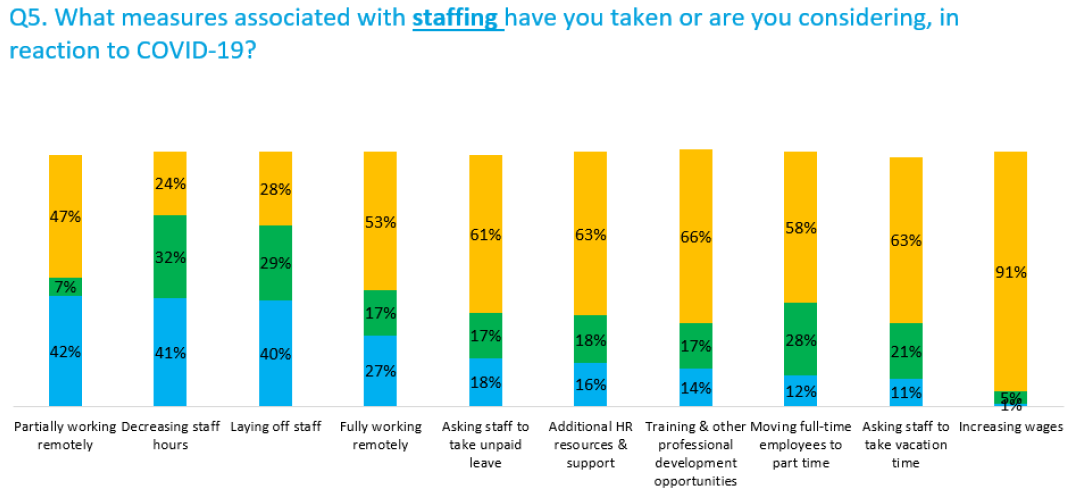
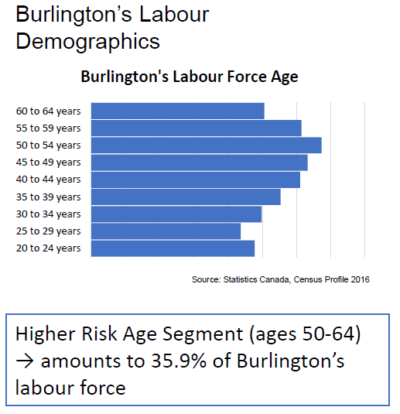


 By Staff By Staff
April 22nd, 2020
BURLINGTON, ON
Senior City staff provided an update on the financial impacts of COVID-19 to a city council that was meeting virtually. The Mayor, the City Clerk and a third person in the audio visual room were in the Council Chamber.
Council was asked to endorse a three-month strategy that prioritizes City services to be provided through to the end of June 2020 to maintain critical and essential services for the city.
Council also approved the recommendation that Committee of the Whole meetings be scheduled to help City business continue and moving forward, virtual delegations will now be allowed for members of the public at City Council meetings.
In addition, Council also approved adding an increased penalty of $250 to specific parking infractions that violate COVID-19 bylaws and orders.
Financial impacts of COVID-19
The strategic management of the City budget and finances continues to be a priority. City Council and staff remain committed to fiscal responsibility and accountability and are focused on offsetting all of the COVID-19 related City revenue losses to June 30, 2020 and are looking ahead past July 2020 to mitigate a shortfall at 2020 year-end. The City is closely monitoring and carefully managing the financial impacts of the COVID-19 emergency while at the same time ensuring taxpayers receive good value for City services that continue, as outlined in the three-month work plan.
The city expects to spend less due to facility closures, not having to pay part time workers plus a significant amount on discretionary spending. They will incur costs of $300,000 on COVID-19 costs
That story is best told in chart form.
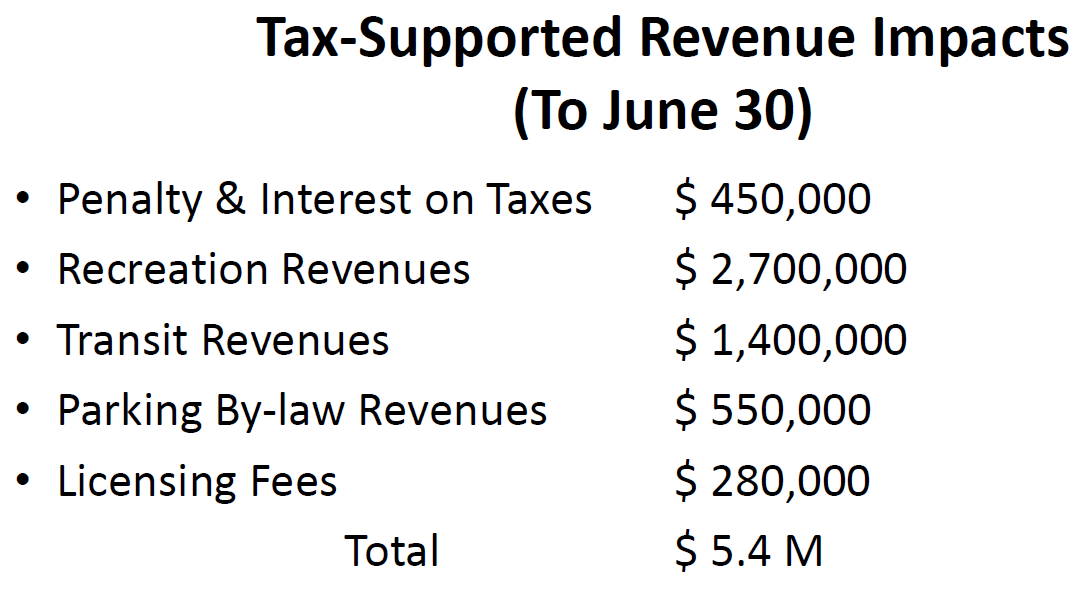 These are funds the city will not be getting due to the shut down of city hall and the closing of many of the services.
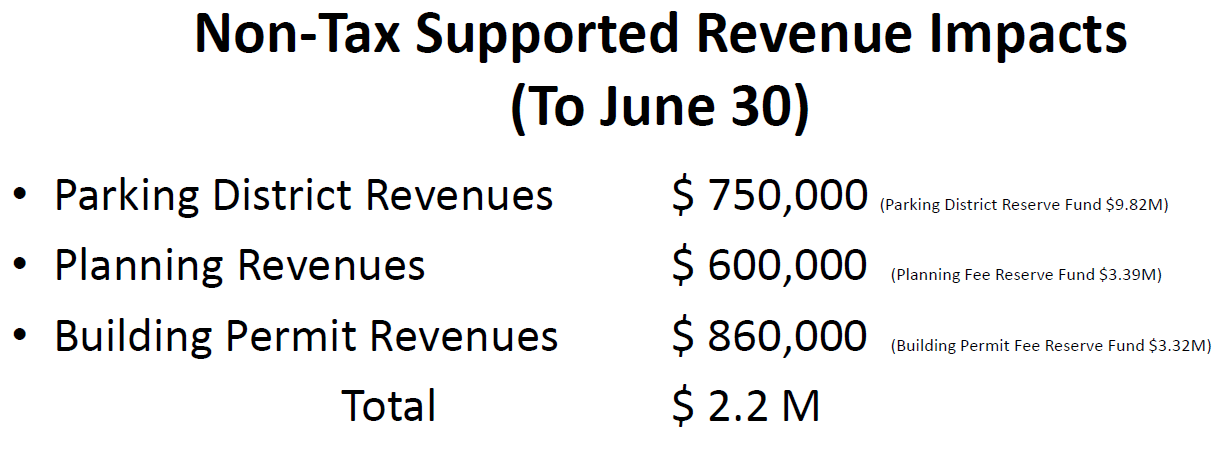 These are funds the city will also not get but for which there are reserves that can be drawn upon.  These are operational savings. Gapping is money budgeted for a job that is vacant. 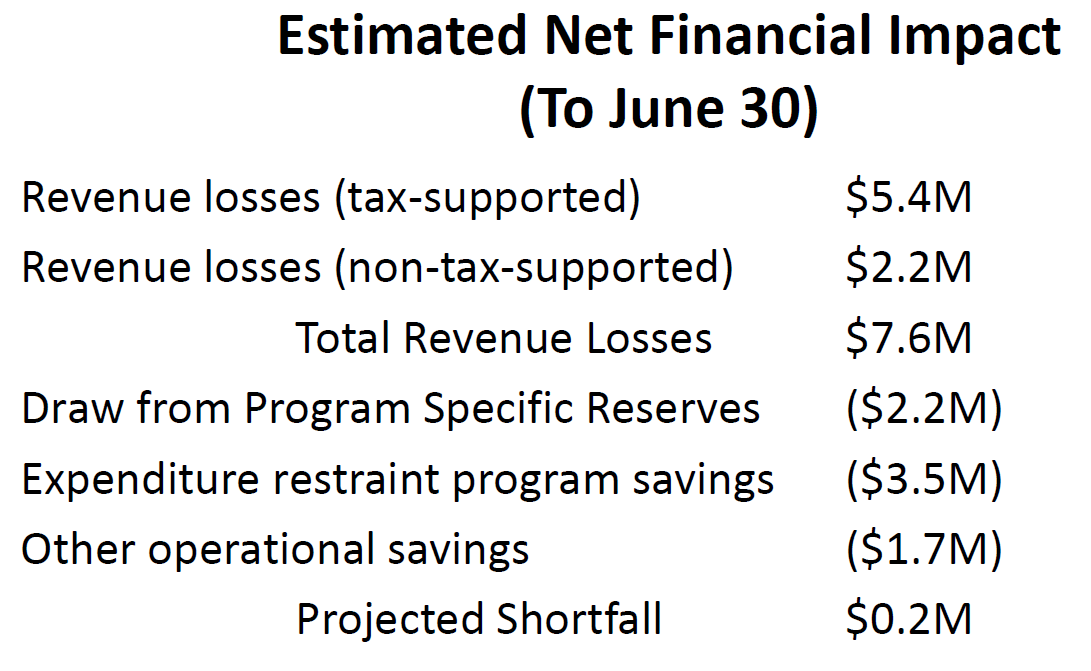 This suggests the city is short just $200,000
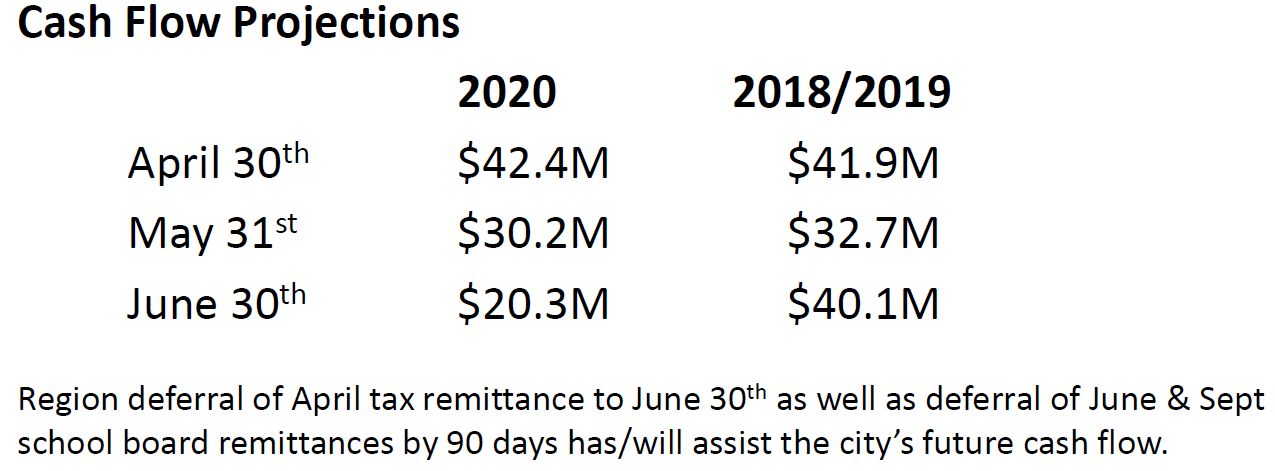 Projections are just that – projections. There are all kinds of things that can happen between now and July. Canada Day has been cancelled. Keep in mind – these numbers get us to end of June – early July.
Will the curve be flattened by then or will the virus make a return when people are permitted to congregate?
Municipalities are required to approve a budget that is balanced, however, the City can have a shortfall or surplus in a given year. A shortfall can be offset by:
• using reserve funds
• increasing taxes in the next year; or
• reducing expenditures during the year of the anticipated shortfall. This is what Burlington is attempting to do to mitigate a shortfall at year-end.
Three-month work plan for COVID-19 Emergency Response Strategy
The City of Burlington COVID-19 emergency response strategy defines the City’s resource needs over the next three-month operating period, to June 30, 2020, to deal with the effects and impacts of the virus on our community and staff. The COVID-19 emergency response strategy and the three-month work plan will be reviewed on a regular cycle to ensure relevancy for operations given the situation and circumstances of this dynamic environment.
Increased parking fines
Council also approved adding an increased penalty of $250 to specific parking infractions that violate COVID-19 bylaws and orders. Current parking penalties related to public health and safety issues such as blocking fire routes, accessible parking, idling and blocking snow operations range from $120 -$400. The add-on $250 penalty is in line with this range and is meant to act as a deterrent to parking in areas that are closed under the City’s COVID-19 State of Emergency. Enforcement officers have been given authority to decide when to apply the additional fee with the goal being education and compliance.
Virtual delegations
At the April 20 meeting, City Council also approved a recommendation to allow virtual delegations from members of the public at Council meetings, beginning in May 2020. For future council meetings, delegates can make a request to delegate to council using the online form or send an email to clerks@burlington.ca. Delegate speaking notes will need to be submitted to Clerks before the meeting in case there are connectivity issues. Delegates will speak to council virtually via phone or internet connection.
To prevent the spread of COVID-19, City Council meetings will continue to be held virtually. During this Council meeting, Mayor Meed Ward was the only member of Council present in Council Chambers along with the City Clerk/designate and an information technology technician. All members of Council participated in the meeting remotely and no members of the public were in attendance.

 By Ray Rivers By Ray Rivers
April 22, 2020
BURLINGTON, ON
 Peter Mackay – at full bore. Peter MacKay had a point – that the Conservatives needed to get a real leader to head their party. Though he may not have put it that way exactly. And he was adamant the Tory leadership convention should proceed, coronavirus or not.
That would have been foolhardy and the party wasn’t having any of it. You just don’t assemble a thousand or more party members for that kind of passionate event in the midst of a deadly epidemic.
But if MacKay didn’t get the memo neither did Andrew Scheer. For him parliament was just another day’s work – and everyone should be there daily – business as usual. Perhaps he could be excused for his devotion to the highest political temple in the country. Working for government was the only real job he’d ever had.
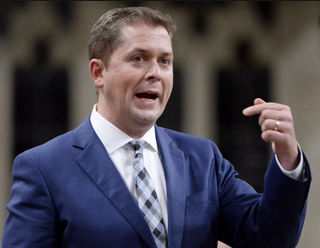 Andrew Scheer But hello, Mr. Scheer – there is a contagion raging throughout the land. Canada’s chief medical officer has told us that everyone’s health is important and MPs like everyone else need to exercise social distancing. As Britain’s PM, Boris Johnson, demonstrated, just because you’re an MP doesn’t mean you are immune from COVID-19.
But it’s pretty clear Scheer has trouble understanding what social distancing means. For example, when the government sent a nine person plane to pick up Scheer and two other MP’s, he insisted on bringing his whole family including all five of his children. Unmasked, they flew together sharing the same breathing space, and were packed-in like sardines in a can.
Unlike Scheer, the other three party leaders do get it. Green MP Elizabeth May believes they can hold the government to account without showing up in Ottawa. MPs from some provinces are required to quarantine after leaving their home province, making it difficult for them to attend. Bloc Quebecois Leader Yves-Francois Blanchet said the average person doesn’t care much about what MPs are up to in Ottawa [anyway].
So, stapled onto the first of a number of emergency funding bills was a request by the Liberals that they be given emergency authority to approve money bills without full parliamentary approval. That, they argued, would expedite the upcoming tranches of emergency funding bills to follow. Trudeau got royally hammered for trying that on.
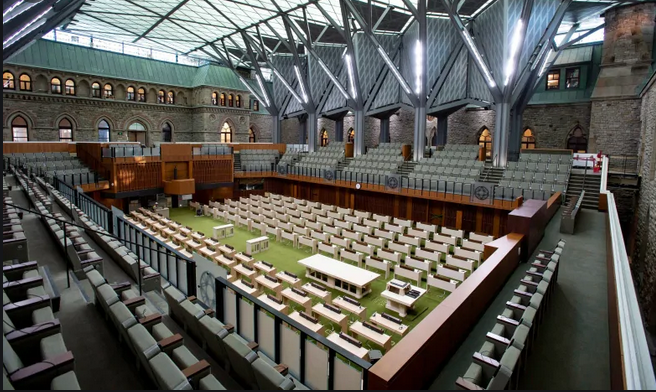 The House of Commons Chamber that the members work in while the Centre Block undergoes a ten year re-build.
To be fair the government probably was just trying to be expeditious and avoid having MPs co-mingle as a group greater than five persons. In a minority situation the opposition could always work together to defeat the Liberals should they feel it necessary. And besides, as we all expected, the funding bills went through pretty much unchanged – so the debate was essentially a rubber stamp. But that was a war measure and this is not war – or is it?
And the funding did take longer to get in place as a result of having to follow due process – something Scheer later complained about, ironically. Though, in fairness, he wasn’t the only one to hold up the emergency response.
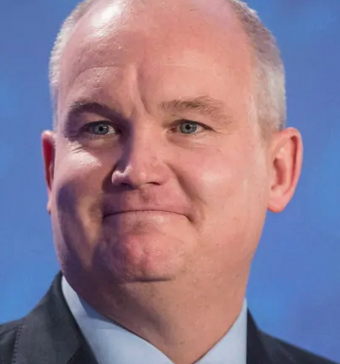 Erin O’Toole MacKay has been adamant that the Tories need a new leader. Of course he is currently the odds-on favourite, even though there is a rising tide for Erin O’Toole in western Canada. There are a lot of things wrong about Scheer but it was probably the mean spirited and miserable campaign last election that wrote his ticket.
Even though he had won the most seats in the House, everyone knew it was only because of western alienation. Some people prefer not to face the truth, even if it is in their best long term interest. Another pipeline or two are of no value if nobody is buying oil. And when the price of even West Texas oil falls so low that the oil companies are paying people to take the oil, it’s time to get out of Dodge…and your gas guzzling Dodge too. The future is clear.
Knowing Scheer had to go, the Tories must have been hopeful to pick amongst the wealth of potential candidates at their pleasure. But it didn’t turn out that way. Rona for personal reasons, Lisa because her neck wasn’t red enough. And Michael because he was just a nice guy – and we know where they finished.
And even Kevin was up to his ears after he and his wife got up to that nasty business with their yacht. Oh, if only Maxime was back in the game. Jason Kenny has his hands full at the moment. And Doug Ford… well….
So it’s Scheer for the interim and that’s a pity for all of us. He’s actually relented now and agreed to a new consensus plan, including virtual meetings. Still you’d think he’d get it. The only reason he’s still in that job is because COVID-19 postponed the Conservative leadership contest. But he still doesn’t take social distancing seriously. I wonder what Peter MacKay thinks about all that.
Leadership – it means walking the talk. That is another reason why the Tories need a new leader.
 Ray Rivers writes regularly on both federal and provincial politics, applying his more than 25 years as a federal bureaucrat to his thinking. Rivers was once a candidate for provincial office in Burlington. He was the founder of the Burlington citizen committee on sustainability at a time when climate warming was a hotly debated subject. Ray has a post graduate degree in economics that he earned at the University of Ottawa. Tweet @rayzrivers Ray Rivers writes regularly on both federal and provincial politics, applying his more than 25 years as a federal bureaucrat to his thinking. Rivers was once a candidate for provincial office in Burlington. He was the founder of the Burlington citizen committee on sustainability at a time when climate warming was a hotly debated subject. Ray has a post graduate degree in economics that he earned at the University of Ottawa. Tweet @rayzrivers
Background links:
Scheer on COVID 19 – COVID Emergency Bill – Scheer Flight –
Economic Response Plan – Who Held Up Government –

 By Staff By Staff
April 20, 2020
BURLINGTON, ON
The Halton Public Health Unit releases data on a regular basis. This is the data up to end of day on April 19, 2020
Cases over time
37 COVID-19 cases reported to Halton Region Public Health since the last update (27 confirmed + 10 probable)
439 COVID-19 cases reported to Halton Region Public Health to date (383 confirmed + 56 probable)
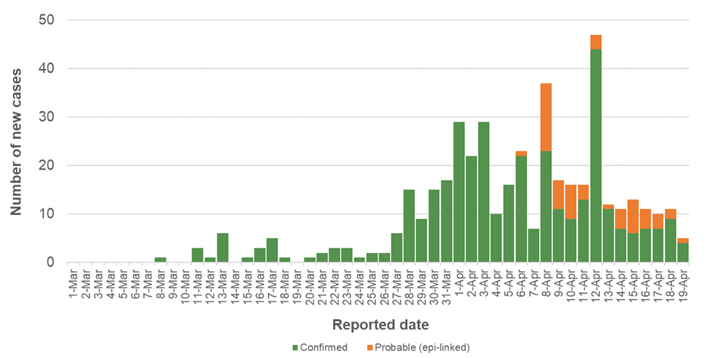
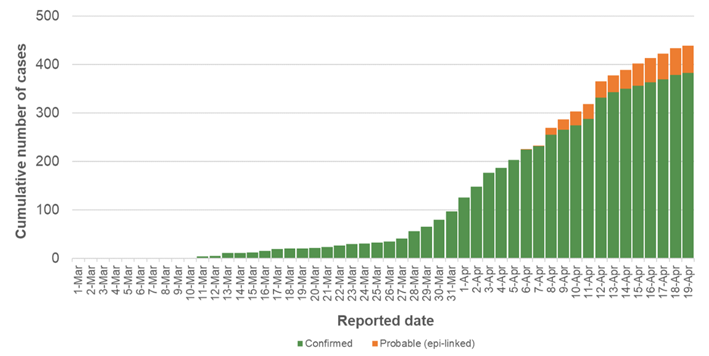
Figures above show the 439 COVID-19 cases that had been reported to Halton Region Public Health by end of the day on April 19. All cases have been graphed according to the date they were reported, which is often several days after the onset of symptoms. Top shows the number of new cases per day, while bottom shows the cumulative cases over time. Among the cases in these figures, 37 were reported since the last update (meaning they were reported between April 16 and April 19, 2020).
Individuals who are lab-confirmed cases are shown in green. Individuals who are probable cases are shown in orange. Probable cases are epi-linked cases, which means they are presumed to have COVID-19 because they are symptomatic close contacts of cases or returning travelers who have COVID-19 symptoms.
Case demographics
70 cases were residents or patients of an institution experiencing an outbreak (16% of all cases)
62 cases work in health care (14% of all cases)
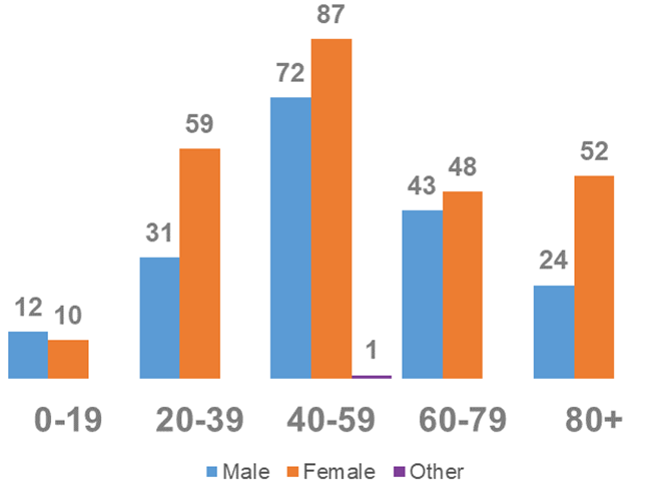 Figure shows that by end of the day on April 19, the most COVID-19 cases were among Halton residents aged 40-59 (with 160 cases, or 36%). 256 of the 439 cases (58%) were female. 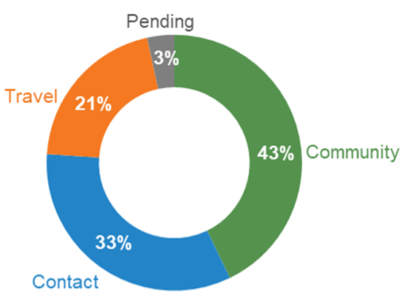
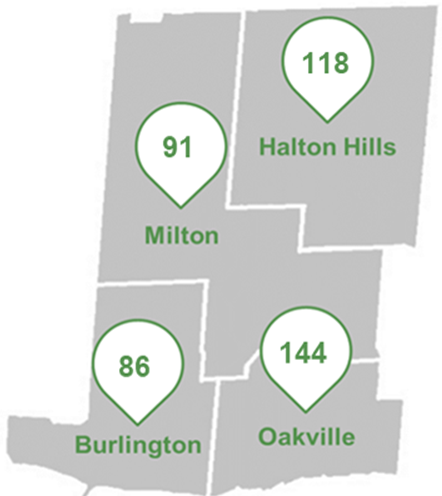 Covid cases by municipality Figure shows that by end of the day on April 19, the greatest number of COVID-19 cases were among residents of Oakville (with 144 cases, or 33%). Please note this figure shows counts, and therefore does not take into account the different population sizes or age structures of the four municipalities. Counts in municipalities can also be inflated by outbreaks that have occurred within institutions in their boundaries.
Case exposure source
Figure shows that by end of the day on April 19, 188 of Halton Region’s COVID-19 cases (43%) had no known travel or contact history, and therefore were believed to have acquired the virus within Ontario, making them community cases. 146 cases (33%) had contact with a confirmed case that was believed to be the source of their infection. 90 cases (21%) had a history of travel that was believed to have been the source of their infection. Information on exposure source was pending for the remaining 15 cases (3%).
Case outcomes
57 cases who have ever been hospitalized to date (29 listed as currently in hospital)
188 cases who have recovered to date
16 cases who have died to date (9 of the deceased were residents or patients of an institution experiencing an outbreak)
Institutional outbreaks
9 confirmed institutional outbreaks of COVID-19 are currently ongoing in Halton
10 confirmed institutional outbreaks of COVID-19 reported to Halton Region Public Health to date
Among the ten confirmed institutional outbreaks reported to date, five (50%) have been in retirement homes, three (30%) have been in long-term care homes, and one each have been in a hospital and a group home. Nine of the outbreaks remain ongoing. Please note these counts do not include any suspected outbreaks that remain under investigation.
Lab testing
>6,000 Halton residents are known to have been tested for COVID-19 to date
Comparison to Ontario
11,184 total confirmed COVID-19 cases reported in Ontario to date
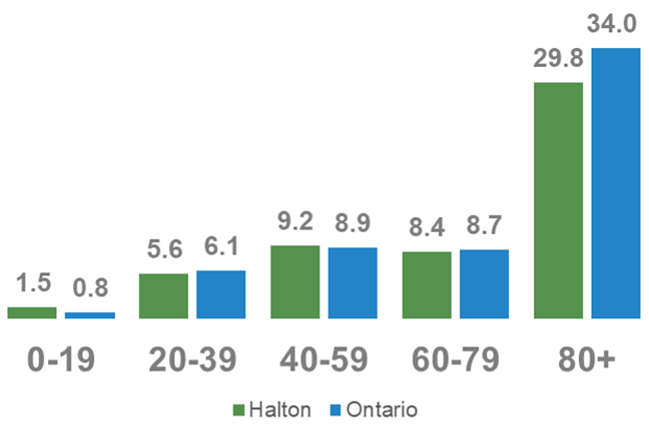 Figure shows age-specific rates of COVID-19 for Halton and Ontario. Rates take into account the population size of each age group to make it possible to compare between different areas. Halton’s age-specific rates are similar to the provincial rates for all age groups (for example, while Halton has 29.8 cases per 10,000 residents aged 80+, this is not statistically significantly different from the 34.0 cases per 10,000 residents aged 80+ in Ontario). It is important to note that these rates will fluctuate as numbers increase throughout the pandemic, and that differences between age groups may reflect differences in the likelihood of developing symptoms and being tested.
There are people who are concerned about the validity of some of the Regional data. One resident wrote the Public Health Unit and got the following response:
Confirmed cases are posted frequently to Halton.ca. Confirmed institutional outbreaks including facility names and date outbreaks declared can be found listed below the “Current Cases in Halton” section of our webpage. Having said that the confirmed cases there are a reflection of the residents/patients within each facility. It does not reflect the staff affected in those numbers at this time. Confirmed cases are reported by municipality of their residence. Of which, there is no reporting structure that reports this without breaching privacy and confidentially mandates in protecting an individuals identity. The reporting structure now used on the Halton.ca webpages reflects changes to reporting made at the Provincial level.
Rest assured, our case numbers in Halton Region are updated daily as we conduct a risk assessment for every COVID-19 case. Based on the risk assessment, high-risk exposures are followed up on according to Ministry and Public Health Ontario guidance. Any individuals deemed close contacts of COVID-19 positive cases will be notified directly. If an outbreak is declared at the long-term care home, there are specific measures must be taken. Positive clients and their close contacts are being case managed and monitored closely by Public Health.
Your concerns are valid and I would direct you to share your ideas at the Provincial level. The government of Ontario is welcoming ideas from businesses, organizations, and individuals to help address the spread and impact of the 2019 Novel Coronavirus (COVID-19) on our communities. Click this link to submit a proposal for ideas, other products or services to help Ontarians:https://www.ontario.ca/form/submit-your-ideas-to-help-fight-coronavirus
The demands on staff at the Public Health Unit are extreme. They are doing the best they can with what they have. A little more transparency on what is really happening at the long term care facilities would help people feel more assured.
Data limitations & data sources
Halton case data: integrated Public Health Information System (iPHIS), extracted at 7:00 AM on April 20, 2020, to reflect data entered by the end of the day on April 19, 2020
Halton lab data: COVID Data Information System, extracted on April 20, 2020.
Ontario case data: Public Health Ontario, Epidemiologic Summary, COVID-19 in Ontario: January 15, 2020 to April 19, 2020, posted on April 20, 2020 to https://www.ontario.ca/page/2019-novel-coronavirus
Denominators for Halton and Ontario age-specific rates: Population projections [2020], IntelliHEALTH Ontario, extracted on April 8, 2020.
Data notes
All cases of diseases of public health significance diagnosed in Ontario are entered into iPHIS by local public health units. iPHIS is the Integrated Public Health Information System. It is a dynamic disease reporting system which allows ongoing updates to data previously entered. As a result, data extracted from iPHIS represent a snapshot at the time of extraction and may differ from previous or subsequent reports as data are updated.
The data only represent cases reported to public health and recorded in iPHIS. As a result, all counts will be subject to varying degrees of underreporting due to a variety of factors, such as disease awareness and medical care seeking behaviours, which may depend on severity of illness, clinical practice, changes in laboratory testing, and reporting behaviours.
Cases are included if their “diagnosing health unit” in iPHIS is Halton Region, which means counts include only individuals whose primary residence is in Halton Region. The case may not necessarily have been managed by Halton Region, if they were temporarily residing elsewhere during their case management period. Cases managed by Halton Region who normally live elsewhere but who were managed by Halton Region staff because they were temporarily residing in Halton during their case management period have not been included.
Cases for which the Disposition Status in iPHIS was reported as ENTERED IN ERROR, DOES NOT MEET DEFINITION, DUPLICATE-DO NOT USE, or any variation on these values have been excluded.
Figure 1 distinguishes between lab-confirmed and probable cases. Since April 7, probable cases are defined as epi-linked cases, meaning they are symptomatic close contacts of cases or returning travelers who have COVID-19 symptoms and therefore are presumed to have COVID-19. All other figures and numbers include both confirmed and probable cases combined.
In subsequent reports, counts in Figure 1 may increase as cases are added from past dates due to delayed data entry or new arrival of lab results. To minimize such retrospective changes, cases have been graphed according to case reported date, which does not reflect onset of illness.
Cases are considered to live in an institution if the name of a facility (e.g. a long-term care home, retirement home, prison) has been entered for their address in iPHIS.
Cases are considered to work in health care if they are known to have an occupation that involves caring for patients, e.g. physician, nurse, occupational therapist, recreational therapist, chiropractor, paramedic, midwife, orderly, etc.
Exposure type is determined by examining the MISSING

 By Pepper Parr By Pepper Parr
April 20, 2020
BURLINGTON, ON
The City has put out an update on what it expects of its citizens.
The parks are closed and are going to remain closed.
City staff are focused on delivering essential services.
With the arrival of warmer weather, residents will start to see City of Burlington staff begin spring maintenance work in City parks and roads:
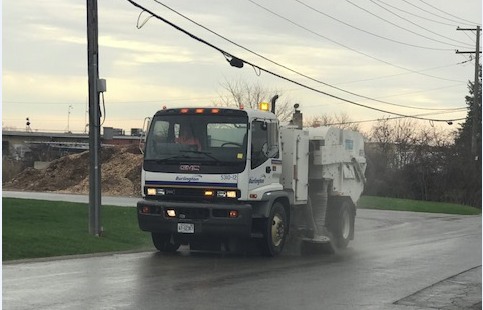 Expect to see equipment like this on the streets • Street sweeping has begun on arterial roads and crosswalks with residential roads scheduled to begin mid-May
• Park and roadside litter clean up where needed prior to grass cutting
• Grass cutting will begin but will not include the usual trimming around trees and other objects
• Repair work for grass that has been damaged by sidewalk snow plows will begin the week of April 27with a contractor visiting the sites to fill areas with soil and grass seed
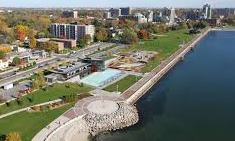 City wants to keep pedestrian traffic to a minimum. Staff are only doing essential work to maintain City parks, facilities and assets until further notice. Wood chips at the Operations Centre on Harvester Road are not available for pick up during the pandemic and community gardens will remain closed as they have been deemed non-essential by the Provincial government. The City has delayed Community Garden openings until further notice.
To help keep everyone safe during the provincial emergency order, Spencer Smith Park is only available for walk-in traffic. The parking lots are closed and only walking is permitted in Spencer Smith Park, including the Promenade and the Brant Street Pier.
Visitors must keep a two-metre distance from other walkers. No other activities are permitted until further notice: no running, no rollerblading and no biking through Spencer Smith Park. This is to reduce the volume of people in Spencer Smith Park and to help walkers maintain physical distancing.
Physical distancing during the COVID-19 pandemic is one of the most important steps everyone needs to take. The COVID-19 virus doesn’t move on its own; it needs people to move it.
Remember to:
• Keep two metres away from others – about the length of a hockey stick
• Move to the right on pathways to make room for others to pass safely
• Carry out your garbage whenever possible
Respect the caution tape and keep off playgrounds, sports fields, skateboard areas, tennis and basketball courts. The City has signage and barricades in the entrances of parking lots to block vehicles from parking. Vehicles left in parking lots will be towed at the owner’s expense.
Residents who see groups of five or more people gathering or individuals using outdoor recreational facilities can call the Halton Regional Police Service COVID hotline to file a report at 905-825-4722.
Local enforceable orders include:
• Closure of places of non-essential businesses
• Prohibiting events and gatherings of more than five people
• Closure of public places and establishments
• Closure of all outdoor recreational amenities and parks
Burlington Transit
As an essential service, Burlington Transit continues to operate on a modified schedule for essential trips only. Essential trips include going to medical appointments and picking up medication or groceries. Extra buses will be added if needed to help protect drivers and allow passengers to practice physical distancing from other riders. Please use the back doors to enter and exit the bus, keep behind the marked area and follow the recommendations of public health professionals. For more information on Burlington Transit, visit www.burlingtontransit.ca
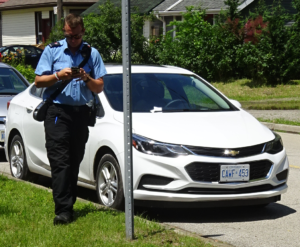 Not much work for the parking control people. Parking
Parking enforcement is currently limited to safety-related issues such as fire routes, accessible parking, no parking/stopping areas and blocked areas, including parking lots at Spencer Smith Park, Lowville Park and all other City parks. Time limit restrictions have been relaxed to help those working from home or self-isolating. Parking permits and exemptions are not required until further notice. For more information on parking, visit www.burlington.ca/parking.
Service Burlington
Customer Service staff are available by phone and email for residents’ questions. Online forms can also be submitted via our website. Only in-person services, such as marriage licences, are not available during the pandemic.
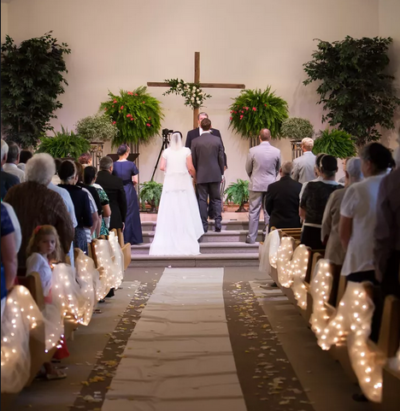 Not going to tie that know this month – maybe not in June either. The City of Burlington is not issuing marriage licences while City Hall is closed. Residents needing a marriage licence can call Service Burlington two weeks before their intended marriage date and if City Hall has re-opened, will be accommodated as close to their wedding date as possible.
Municipalities issue marriage licenses on behalf of the Province of Ontario. Current legislation requires original signatures and documentation. City staff have asked the Province to review this legislation and make some interim amendments to allow for electronic signatures and documentation. Staff is also asking the Province to extend the licenses that were issued prior to the COVID-19 shutdown beyond the normal 90-day expiry dates.
In-Home Activities
The best thing residents can do to protect themselves and the community, is stay home. The City of Burlington and its partners have put together a list of activities people of any age can do while staying home at burlington.ca/programming. The list includes:
• Virtual fitness
• Free music
• Ebooks, emagazines and online resources from Burlington Public Library at bpl.on.ca
• Videos for recreation programming such as games, activities and crafts.
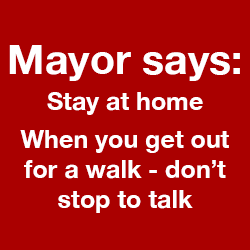 Mayor Marianne Meed Ward cautions people. “As the weather gets warmer we know it will be harder to follow the provincial emergency orders, and the directives from Burlington City Hall. But we must continue to stay apart, and stay in our own neighbourhoods, so we can get through this sooner. Please resist the urge to congregate in groups, stay 6 ft. away from anyone you don’t live with and please stay in your own neighbourhood and local parks for your walks. Mayor Marianne Meed Ward cautions people. “As the weather gets warmer we know it will be harder to follow the provincial emergency orders, and the directives from Burlington City Hall. But we must continue to stay apart, and stay in our own neighbourhoods, so we can get through this sooner. Please resist the urge to congregate in groups, stay 6 ft. away from anyone you don’t live with and please stay in your own neighbourhood and local parks for your walks.
“Walk, don’t stop, and stay off playgrounds, benches and other park amenities. In particular, please do not come downtown to the waterfront where there has been some crowding in Spencer Smith Park and Beachway Park. We have taken extra measures to restrict the use of these areas.
“We know how difficult this has been so far for our residents, but it will only get more difficult the longer we have to keep these directives in effect. The longer we stay apart now, the sooner we can safely come together.”

 By Pepper Parr By Pepper Parr
April 19th, 2020
BURLINGTON, ON
City Manager Tim Commisso’s life has been boiled down to a single word – Risk!
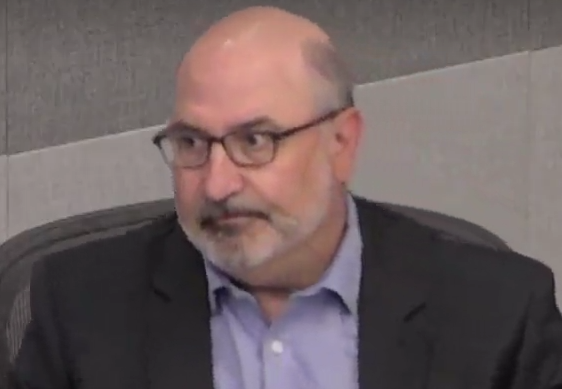 City manager Tim Commisso Everything he looks at is seen through a single lens; it is as if he is wearing a monocle.
Every decision is – what is the risk of doing something or the risk of not doing something.
His one job is to ensure the city provides the services needed to keep people safe and that staff provide the services needed to keep the city operating. It is a challenge.
Few have much in the way of an idea as to just how complex this is.
Commisso runs the show. His word is the final word. He listens and takes advice but at some point he has to make a decision and be held responsible.
He doesn’t always get it right. He had to learn to open up and ensure that members of Council were kept in the loop – aware of what was being done and why.
He is now giving Councillors a report each week.
He has the best people on the city payroll available to him at that virtual table – they communicate as a group twice a day – all by telephone.
The Mayor is reported to be the backup and takes turns chairing the Emergency Coordinating Group (ECG)
The two charts below show the ECG organizational chart that was created March 17th. The detail quality is poor – we have asked the city for a graphic with a higher resolution.
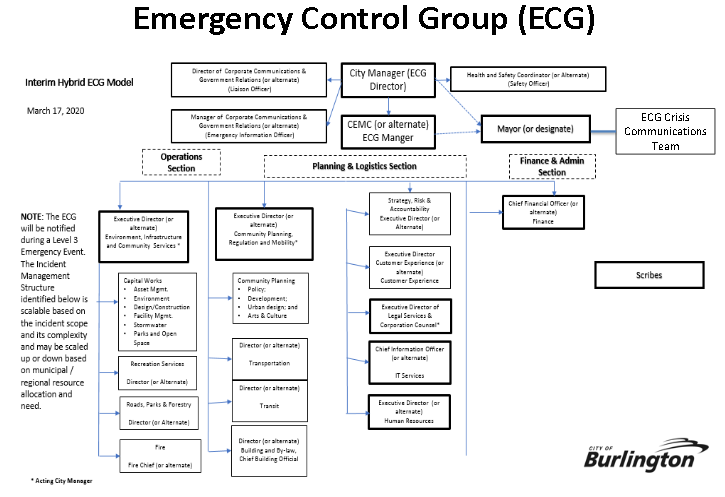
Commisso has set out the timeline he plans to follow in reporting to Council.
CSSRA is the acronym for the Corporate Services, Strategy, Risk and Accountability Standing Committee that is chaired by Rory Nisan with Paul Sharman as the vice chair.
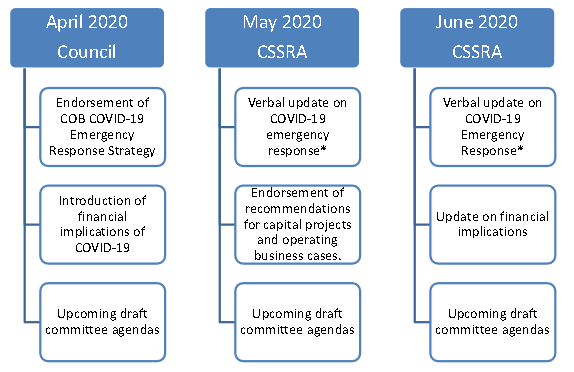

 By Staff By Staff
April 20th, 2020
BURLINGTON, ON
This is not what we wanted to hear at the start of a new week.
“Humanity will have to live with the threat of coronavirus “for the foreseeable future” and adapt accordingly because there is no guarantee that a vaccine can be successfully developed, one of the world’s leading experts on the disease has warned.”
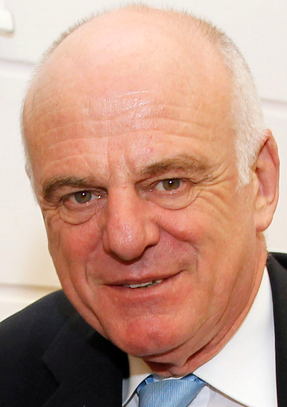 David Nabarro In an interview with The Observer, David Nabarro, professor of global health at Imperial College, London, and an envoy for the World Health Organization, said the public should not assume that a vaccine would definitely be developed soon – and would have to adapt to the ongoing threat.
“You don’t necessarily develop a vaccine that is safe and effective against every virus. Some viruses are very, very difficult when it comes to vaccine development – so for the foreseeable future, we are going to have to find ways to go about our lives with this virus as a constant threat.
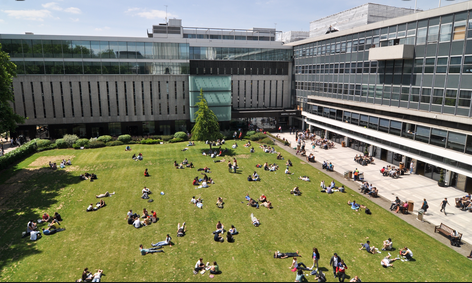 Imperial College, London “That means isolating those who show signs of the disease and also their contacts. Older people will have to be protected. In addition hospital capacity for dealing with cases will have to be ensured. That is going to be the new normal for us all.”
When it comes to credibility the Observer, a British newspaper, is as good as it gets and the Imperial College, London has a sterling reputation in these matters

|
|
 By Pepper Parr
By Pepper Parr




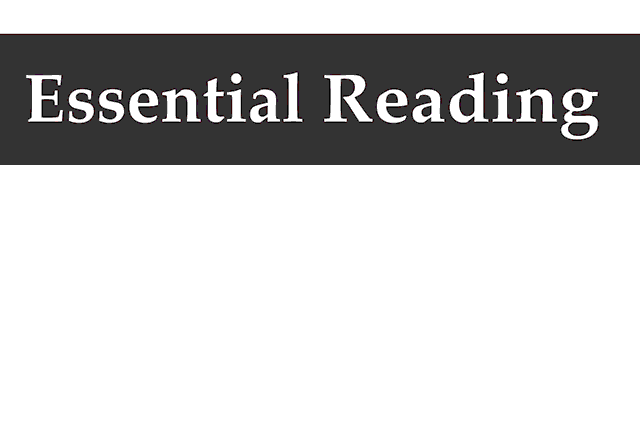















 “All four Mayors have made the commitment to keep each other apprised of decisions being considered in each respective municipality, share best practices, and coordinate when it comes to the recovery planning. They will also ensure a continued close linkage with Halton Region, with the chair Gary Carr as an invited guest to our group when his schedule permits.”
“All four Mayors have made the commitment to keep each other apprised of decisions being considered in each respective municipality, share best practices, and coordinate when it comes to the recovery planning. They will also ensure a continued close linkage with Halton Region, with the chair Gary Carr as an invited guest to our group when his schedule permits.”

 By Ashley Worobec
By Ashley Worobec

















 The HRPS and Halton CAS are asking that everyone remains mindful of the welfare of their neighbours, their children’s friends and classmates, and their relatives. It is crucial that residents also speak to their children about what to do if a friend confides in them that they are not safe at home.
The HRPS and Halton CAS are asking that everyone remains mindful of the welfare of their neighbours, their children’s friends and classmates, and their relatives. It is crucial that residents also speak to their children about what to do if a friend confides in them that they are not safe at home.




 If you tried that in Burlington – it would probably be a bylaw infraction or Legal would find a way to say – that it can’t be done.
If you tried that in Burlington – it would probably be a bylaw infraction or Legal would find a way to say – that it can’t be done.
















 Ray Rivers writes regularly on both federal and provincial politics, applying his more than 25 years as a federal bureaucrat to his thinking. Rivers was once a candidate for provincial office in Burlington. He was the founder of the Burlington citizen committee on sustainability at a time when climate warming was a hotly debated subject. Ray has a post graduate degree in economics that he earned at the University of Ottawa. Tweet @rayzrivers
Ray Rivers writes regularly on both federal and provincial politics, applying his more than 25 years as a federal bureaucrat to his thinking. Rivers was once a candidate for provincial office in Burlington. He was the founder of the Burlington citizen committee on sustainability at a time when climate warming was a hotly debated subject. Ray has a post graduate degree in economics that he earned at the University of Ottawa. Tweet @rayzrivers









 Mayor Marianne Meed Ward cautions people. “As the weather gets warmer we know it will be harder to follow the provincial emergency orders, and the directives from Burlington City Hall. But we must continue to stay apart, and stay in our own neighbourhoods, so we can get through this sooner. Please resist the urge to congregate in groups, stay 6 ft. away from anyone you don’t live with and please stay in your own neighbourhood and local parks for your walks.
Mayor Marianne Meed Ward cautions people. “As the weather gets warmer we know it will be harder to follow the provincial emergency orders, and the directives from Burlington City Hall. But we must continue to stay apart, and stay in our own neighbourhoods, so we can get through this sooner. Please resist the urge to congregate in groups, stay 6 ft. away from anyone you don’t live with and please stay in your own neighbourhood and local parks for your walks.




